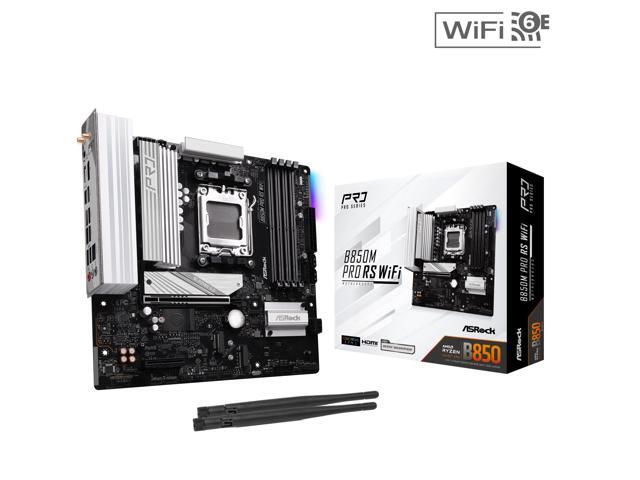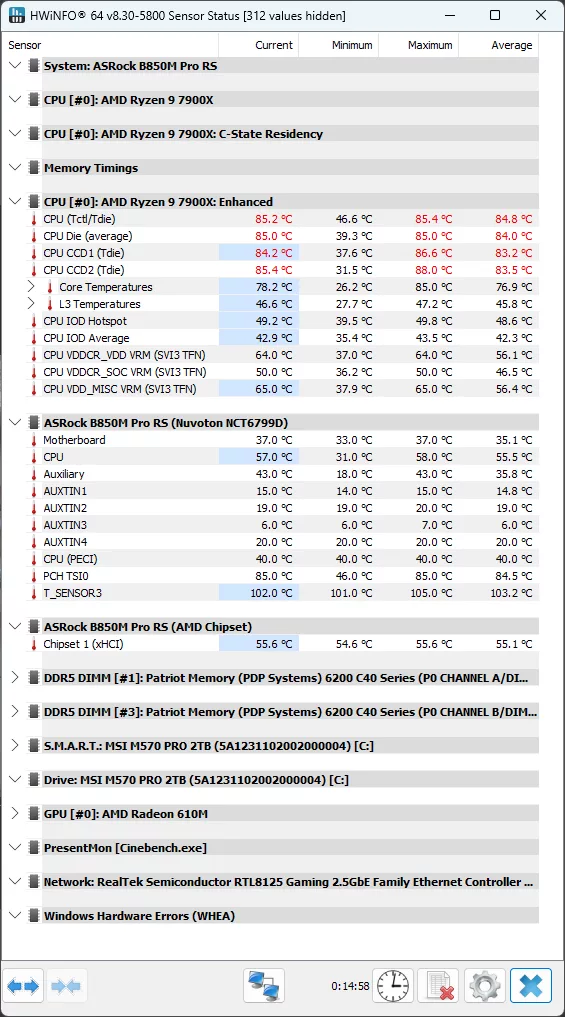
Introduction
Today, the ASRock B850M Pro RS is on our test bench for us to look at. This is the latest in ASRock’s Pro RS line of motherboards, which, as a reminder, are targeted at the professional market, with little focus on gaming. ASRock’s Pro RS line are typically some of the more reliable motherboards you will be able to find, while being extremely cost-effective.
With this being targeted at the professional market, ASRock has included some features that will interest this market sector. ASRock was able to fit a total of four (4) M.2 slots on this mATX board, with one of them being dedicated for a Key-E slot, along with the ability to use ECC memory, a rarity among B850 (or even X870) motherboards. The ASRock B850M Pro RS comes in at a price of around $150, which on its face seems very competitive.
Packaging and Contents
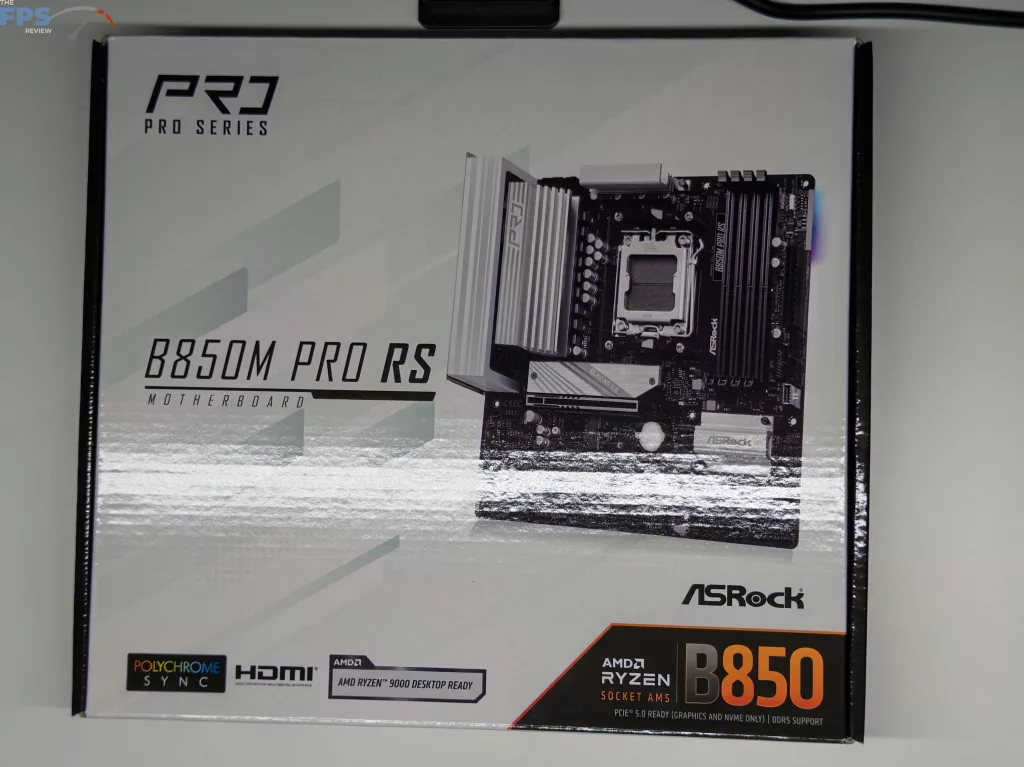
At a price of just about $150, the ASRock B850M Pro RS certainly does not come with a ton of “goodies” in the box. Similar to the ASRock B850M Riptide WIFI ($190) we just reviewed, the Pro RS comes with two (2) SATA cables, one (1) M.2 socket screw, and the typical regulatory notices. There is a sister motherboard to this one, the WIFI edition, that also comes with WIFI Antenna’s.
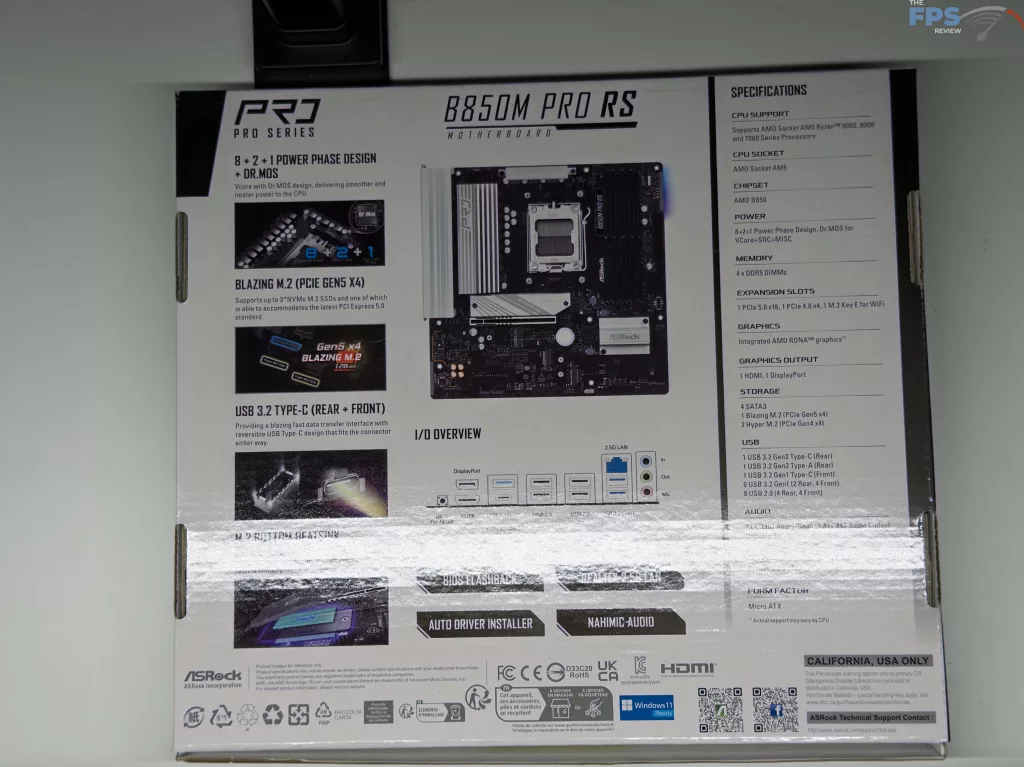
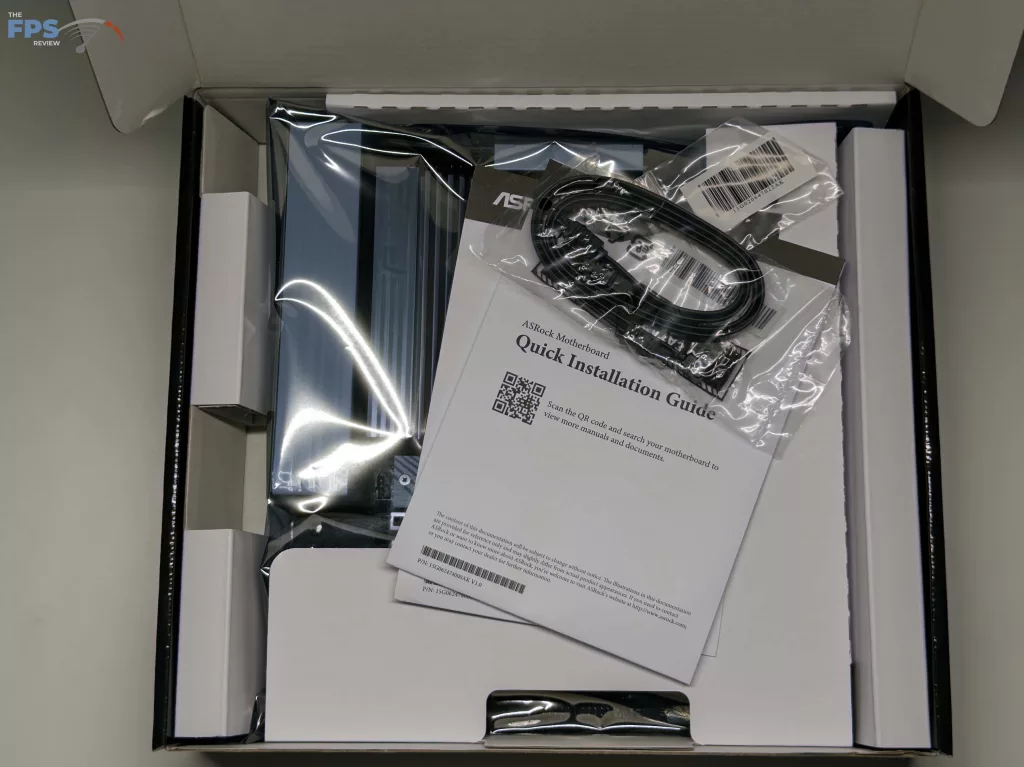
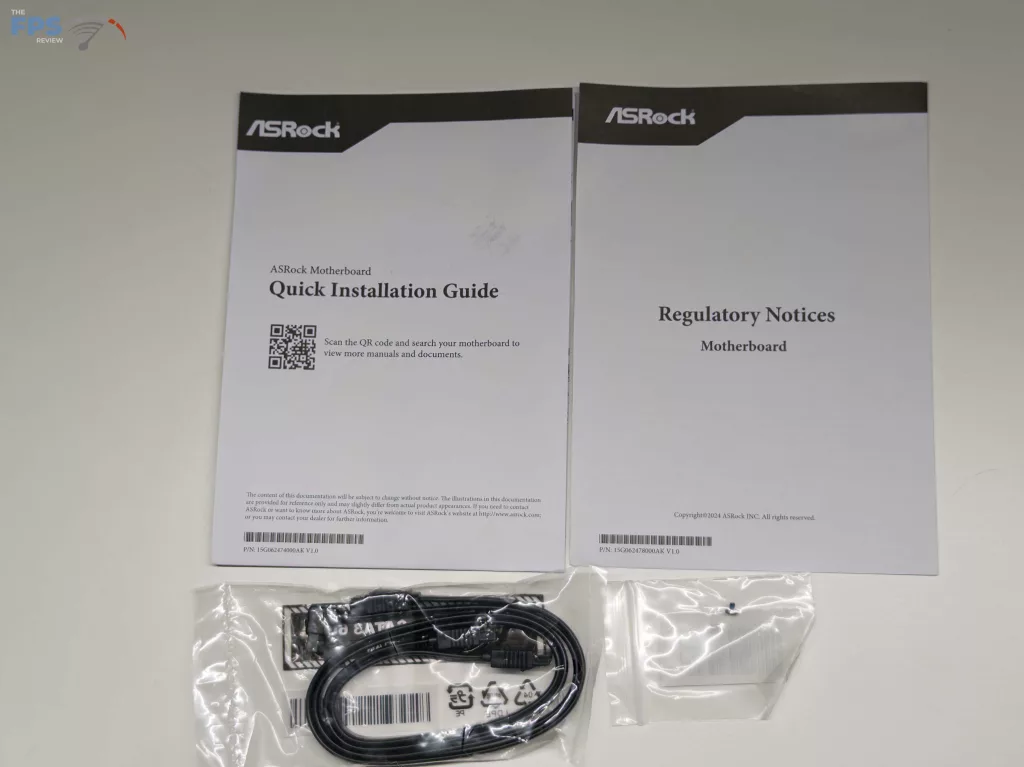
ASRock B850M Pro RS Features
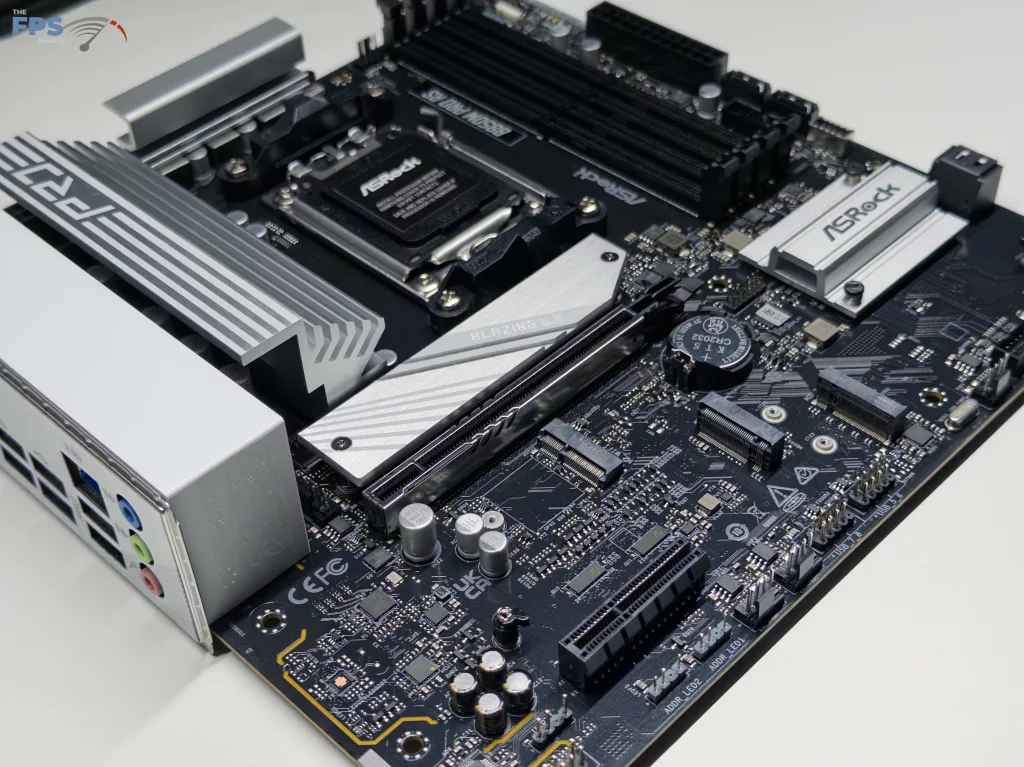
The ASRock B850M Pro RS, off the cuff, looks to be a very similar motherboard to the B850M Riptide we just had through our office. It has the same three (3) full-size NVMe M.2 slots, four (4) SATA ports, and a similar layout for all the features. After this, you will find an accessible M.2 Key-E slot, something that is usually hidden behind the power delivery cooling for most manufacturers.
Power Delivery
Since the ASRock B850M Pro RS is not targeted at gamers, or even high compute applications, ASRock has gone with one of the smaller power phase designs we have seen at just 8 VCORE Phases + 2 SOC Phases + 1 VDD_MISC Phase. While this is less than even the Riptide, the cooling provided has the look and feel of being more substantial. During our testing, we had no problem maintaining our performance to levels we are used to seeing, and AMD’s Precision Boost Overdrive (PBO) had no issues activating.
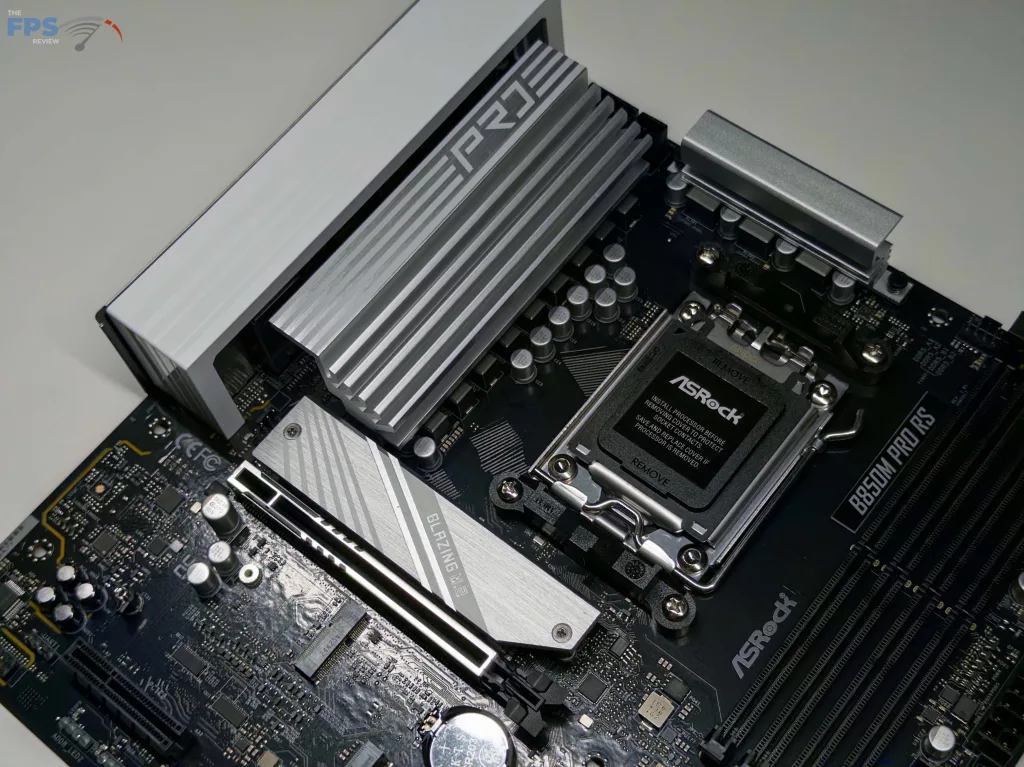
Memory and Storage
Unlike most of the current offerings from any vendor for an AMD motherboard, the ASRock B850M Pro RS supports both ECC and non-ECC memory, with a maximum capacity of 256 GB (64 GB per slot). Typically, you will be able to use AMD’s Extended Profiles for Overclocking (EXPO), or Extreme Memory Profile (XMP) settings for quick overclocking of memory. ASRock states that users will be able to reach speeds of 8,000 MT/s +, however, we cannot independently verify this, as our good old Patriot kit maxes out at 6,200 MT/s, which we had no issues hitting here.
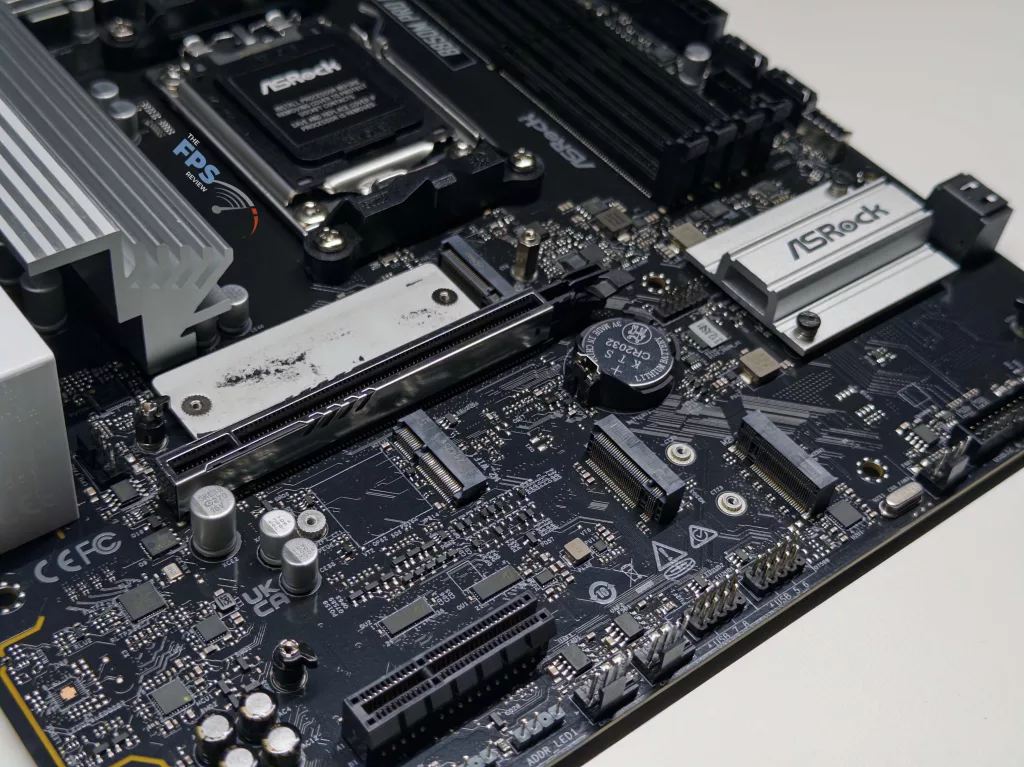
There are three (3) total M.2 that all support up to 2280-sized drives, with the primary slot, M2_1, being the lone Gen5x4 slot, with the remaining two being Gen4x4 slots. ASRock has done a nice job spacing out the slots for storage, with the M2_1 slot being spaced far enough away from the rear I/O shroud and other elements on the motherboard to fit even the oversized cooler on the M570 drive we have for testing. The remaining two slots are only Gen4 speeds, and are served by both the CPU (M2_3) and the B850 chipset (M2_2). The only thing to note is that if a user is using the M2_3 slot, the lower PCIe slot will be disabled. One last thing we want to touch on is the remaining M.2 Key-E slot. This slot is intended for the use of a WIFI card in the WIFI model of the ASRock B850M Pro RS; however, it can also be used for any shorter card, such as a Google Coral TPU, which is a nice touch for the professional users out there.
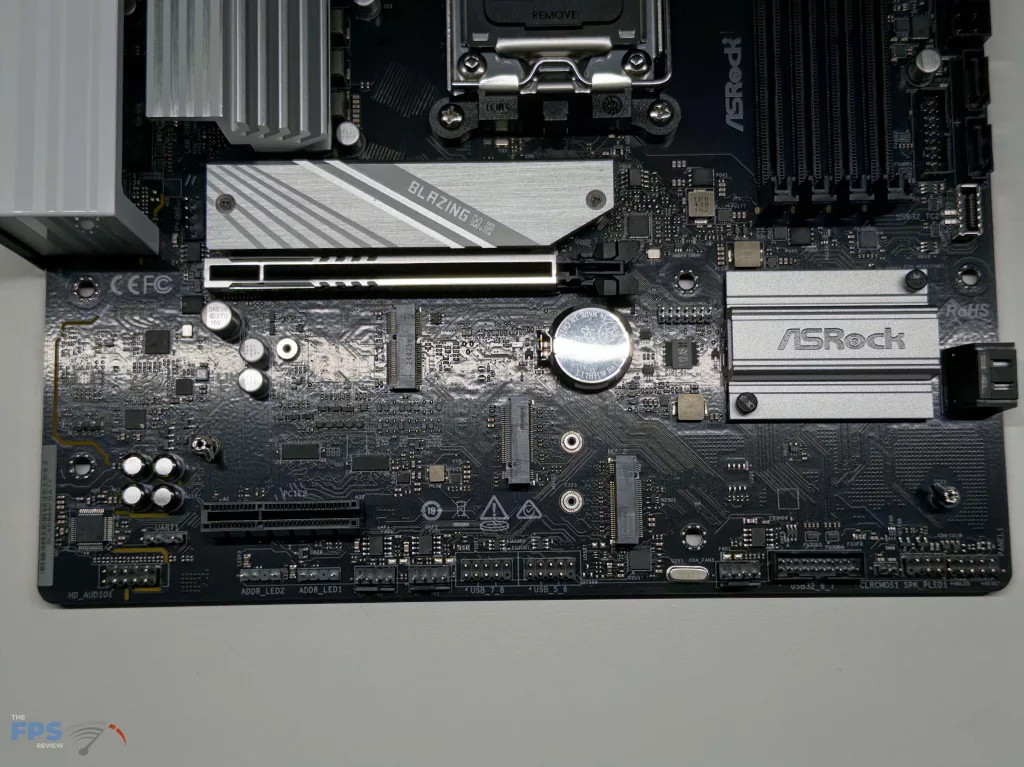
The last thing we want to mention is that ASRock has provided four (4) total SATA 6 GB/s ports for any additional storage the end user might want to include.
Expansion
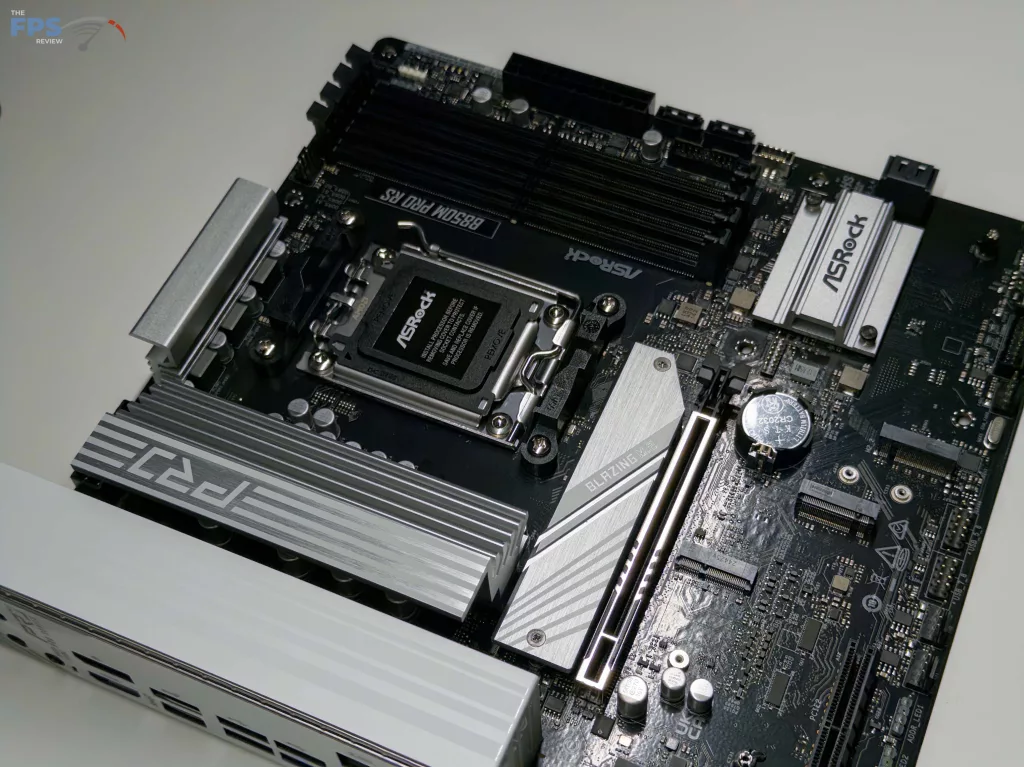
Similar to the B850M Riptide we just reviewed, we again see the option to go with what we are terming one and a half PCIe slots. The uppermost slot is a full x16 PCIe 5.0 slot, with metal reinforcement, while the lower slot is a x4 PCIe 4.0 slot that is shortened with the end open to allow for installation of longer than x4 cards if desired; however, do note that there is no retention mechanism. With the primary slot, ASRock has provided a metal reinforcement, which is quickly becoming a standard on most motherboards this generation. One thing we wish we would see is either a remote retention release for this slot or even an oversized retention clip; however, with this not being targeted at the gaming market, it is unlikely that the target user will have a large GPU with a thick backplate where this would be an issue.
I/O
I/O for the ASRock B850M Pro RS is relatively limited. For expansion, there is a single USB Type-C Gen 2 port, one (1) USB Type-A Gen 2 port, two (2) USB Type-A Gen 1 ports, and four (4) USB 2.0 ports. Video output can be by either the Display Port or HDMI ports, and Audio is provided by three (3) Audio jacks for Line In / Front Speaker / Microphones, all from a Realtek ALC897 Audio Codec. Finally, there is a BIOS Flashback button for when things go wrong, and mounting points for two (2) antennas if you choose to add WIFI to the motherboard.
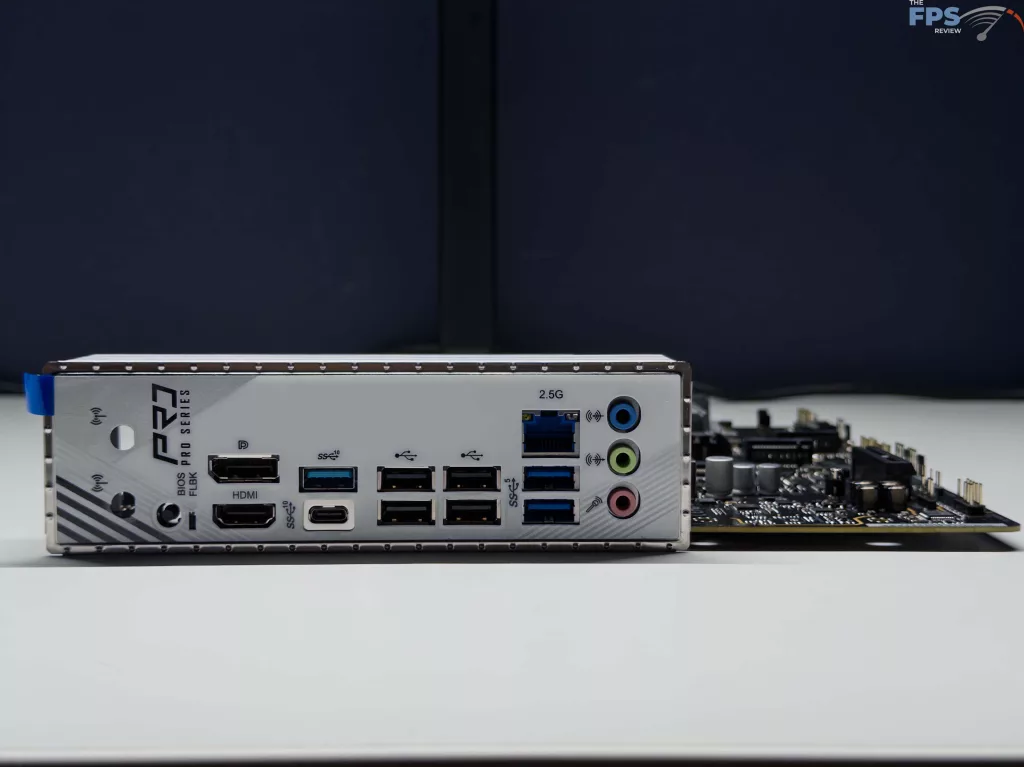
Following this there is limited expansion for your front panel. ASRock has provided headers for one (1) USB Type-C Gen 1 port, four (4) USB Type-A Gen 1 ports, and four (4) more USB 2.0 ports. For cooling, there are two (2) 4-pin CPU fan connectors, and three (3) more 4-pin chassis fan connectors. For those RGB lovers out there, this motherboard does have a total of four (4) headers. Three (3) are for Addressable LED strips, while there is one (1) standard RGB LED header.
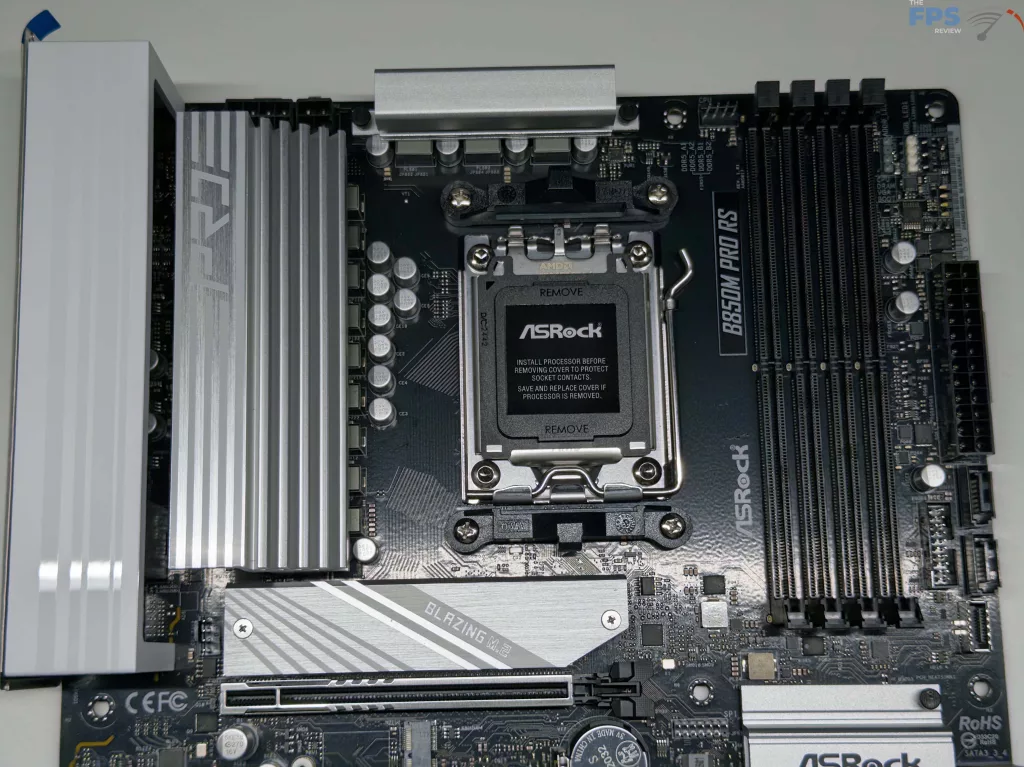
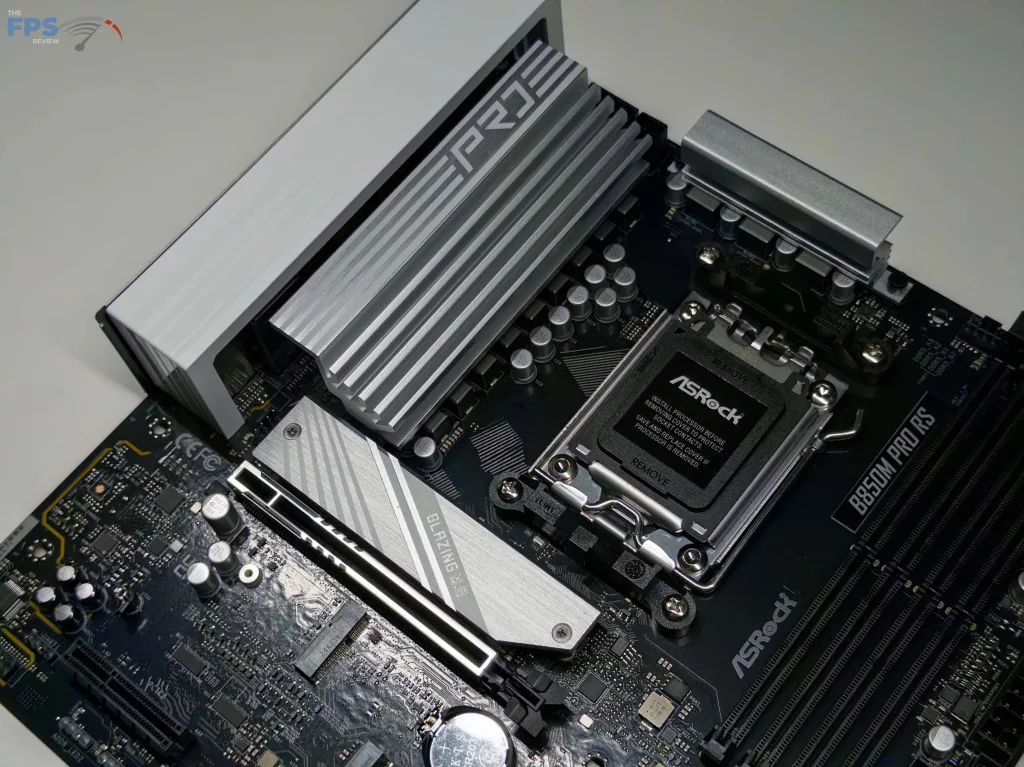
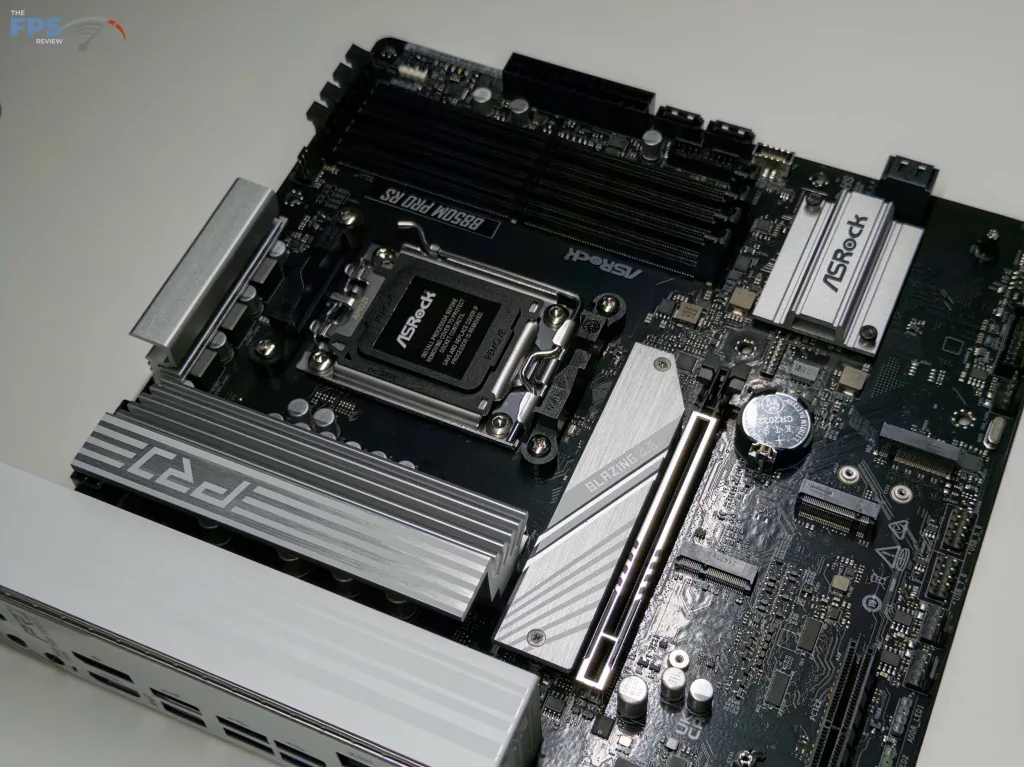
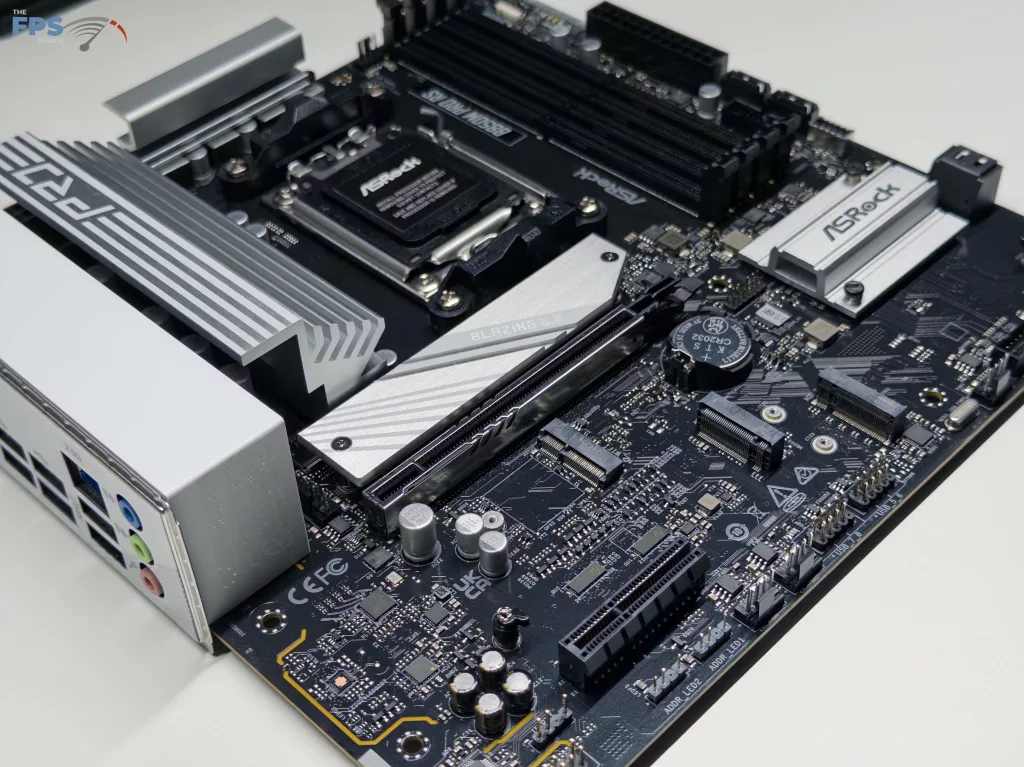
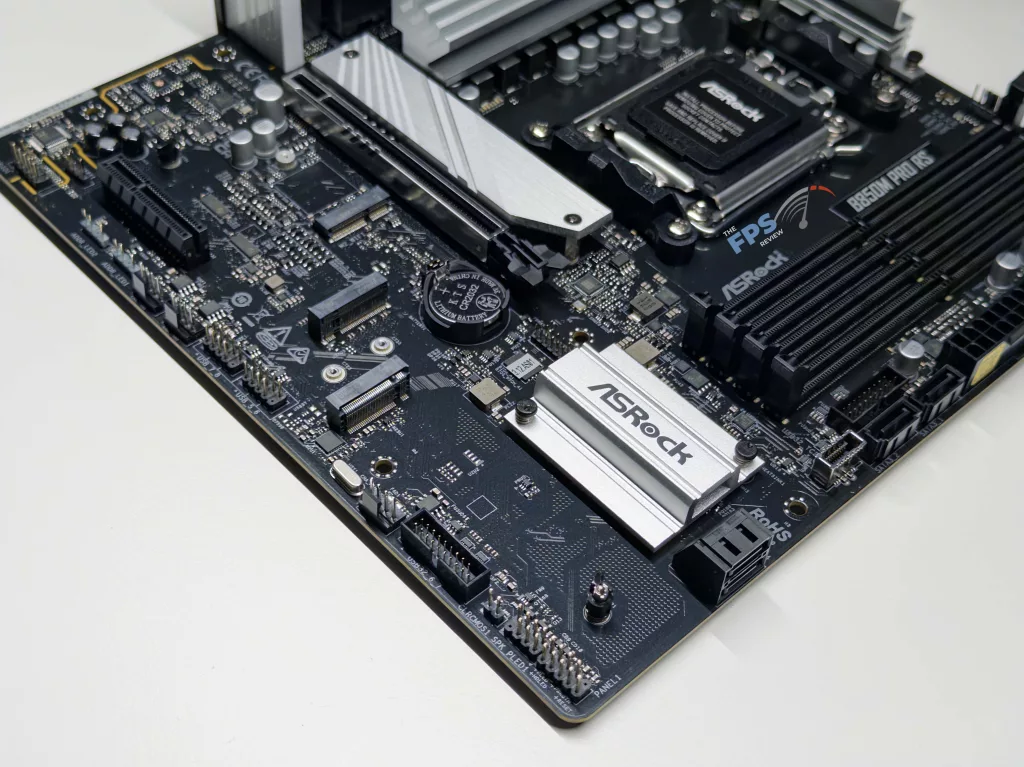
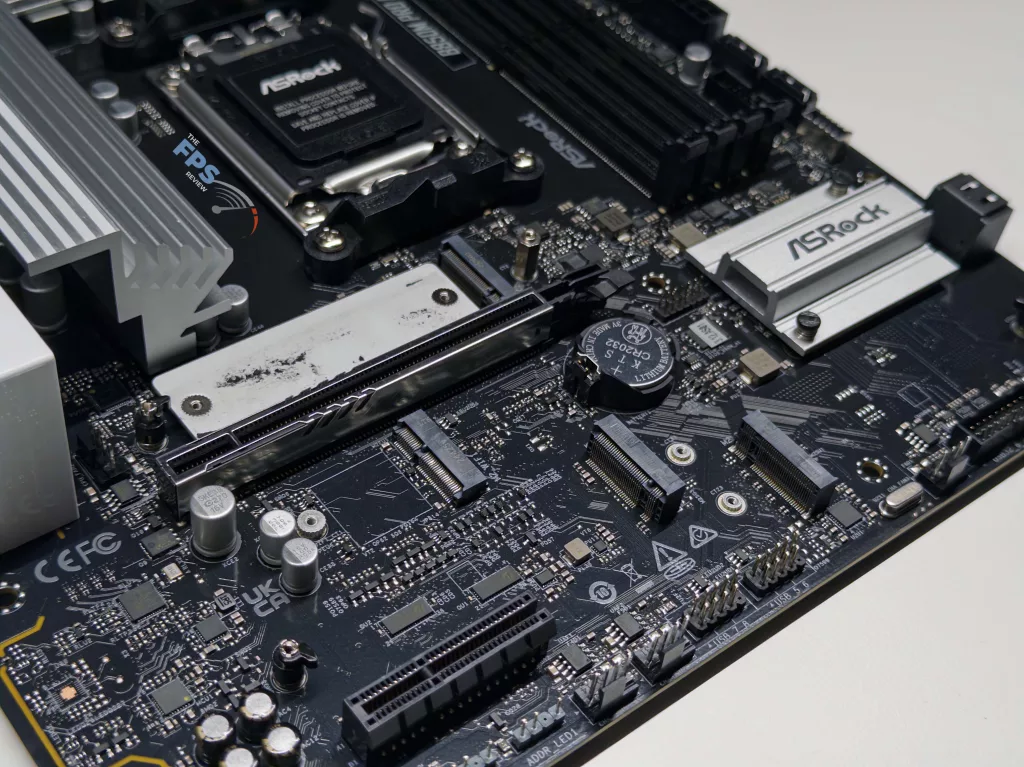
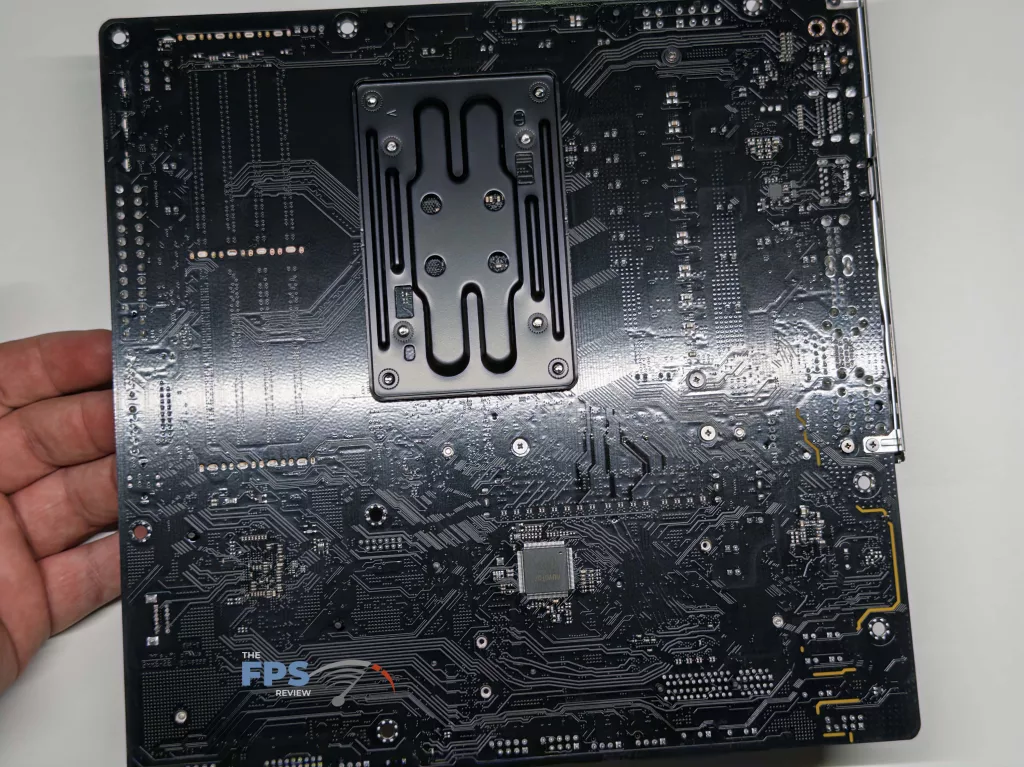
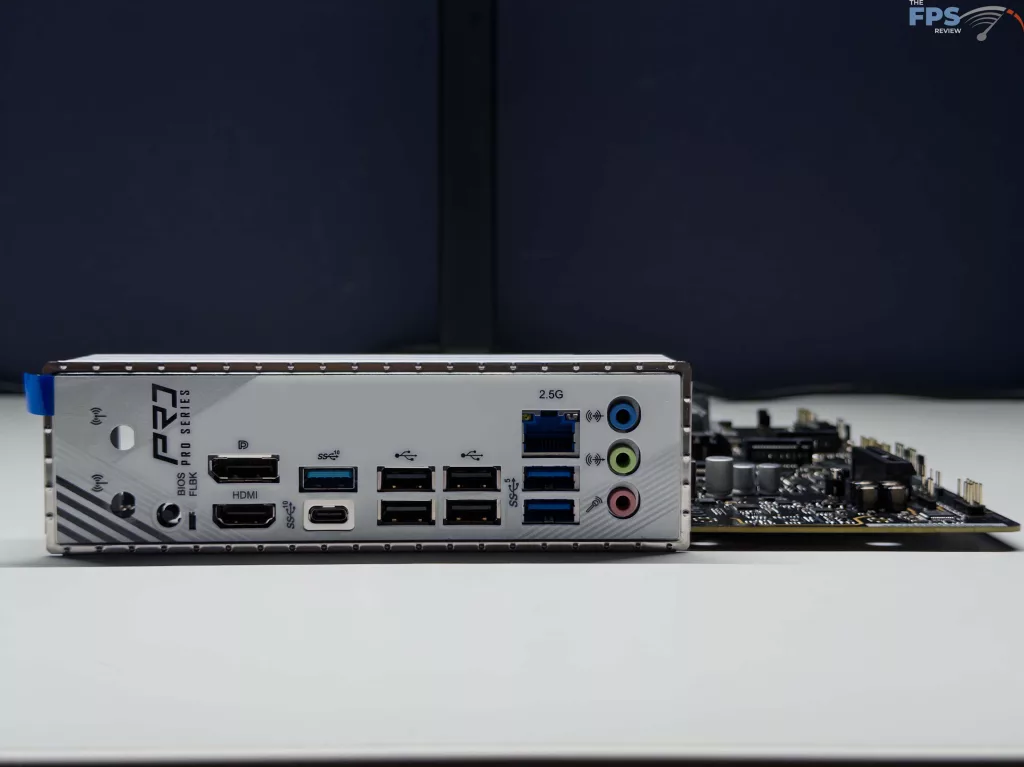
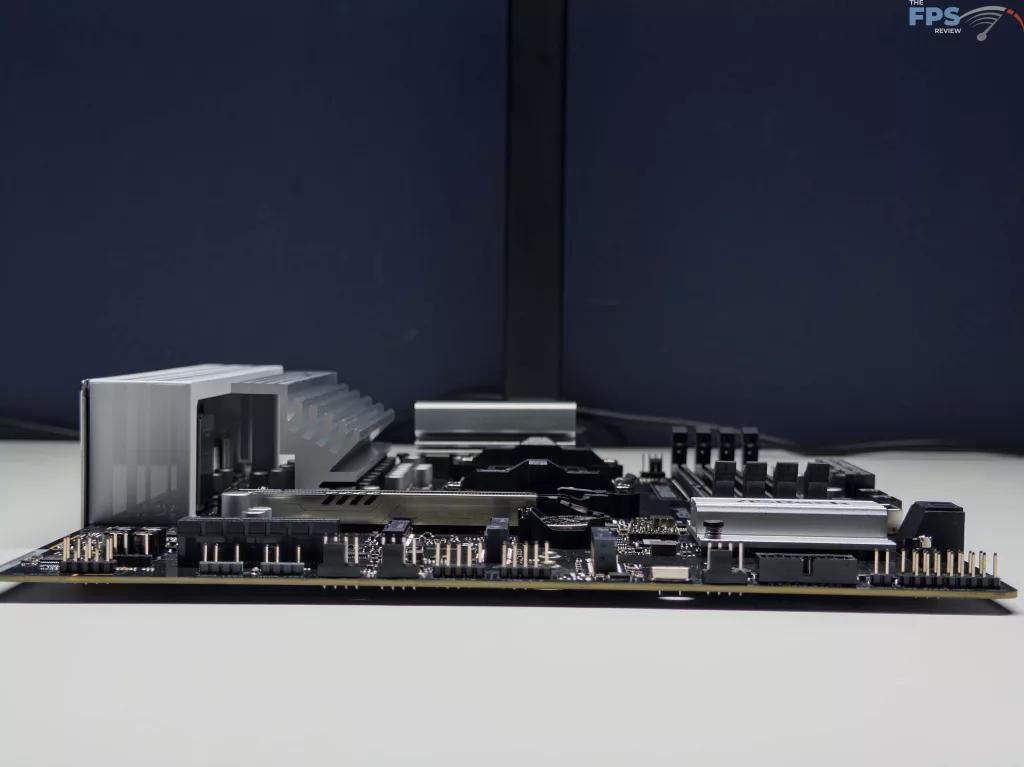
UEFI
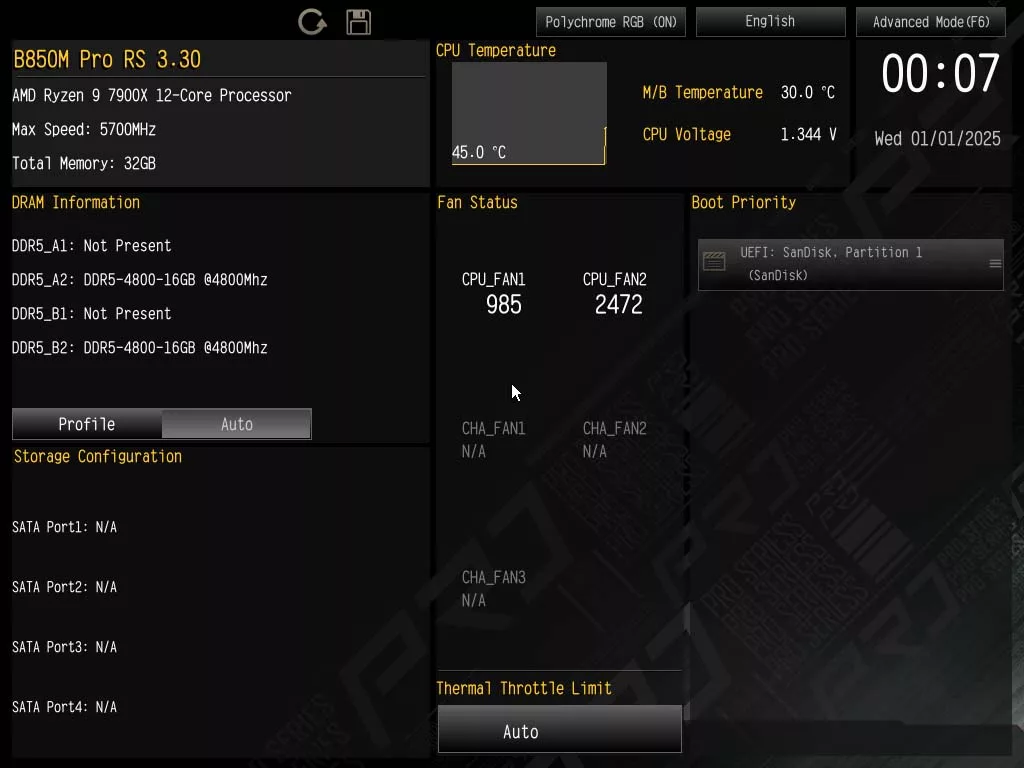
Unlike the ASRock B850M Phantom Gaming Riptide WiFi we just reviewed, the ASRock B850M Pro RS BIOS on first boot put us in the Easy Mode of the UEFI. As with other ASRock UEFIs, it is easy to swap to Advanced Mode by hitting the “F6” key.
On the Easy Mode screen, you will find quick status information for major system components. The end user will be able to quickly see what CPU is installed, memory quantity, timing and speed, along with temperatures for the CPU and Motherboard, and fan speeds for any installed fans. Lastly, Easy Mode gives quick access to the RGB settings by clicking the “Polychrome RGB” button on the top of the screen. For Advanced Mode, the main tab gives a quick overview of your CPU, UEFI version, and memory speed, quantity, and slots occupied. After this, the UEFI is very similar to all recent ASRock motherboards; there is a tab for “OC Tweaker”, ASRock’s primary spot for overclocking, an “Advanced” Tab for diving even further into voltages and timings, along with the standard monitoring tab where you can adjust your fan speeds. Overall, the settings closely match all other recent AMD ASRock motherboards we have put through our testing in recent months.
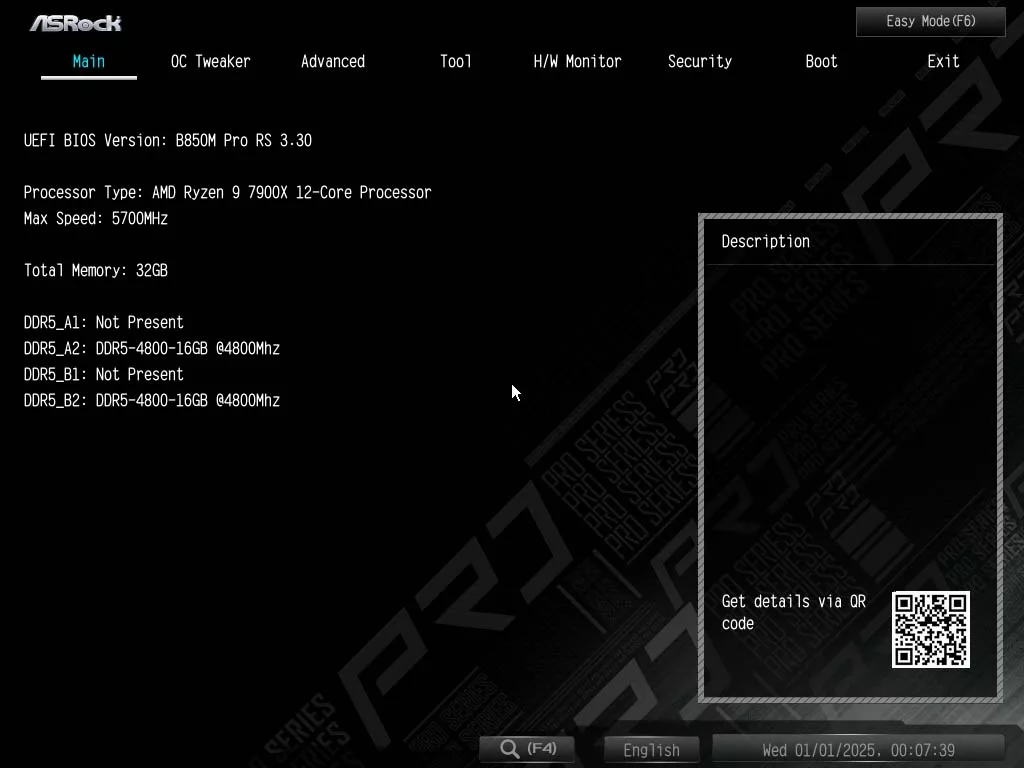
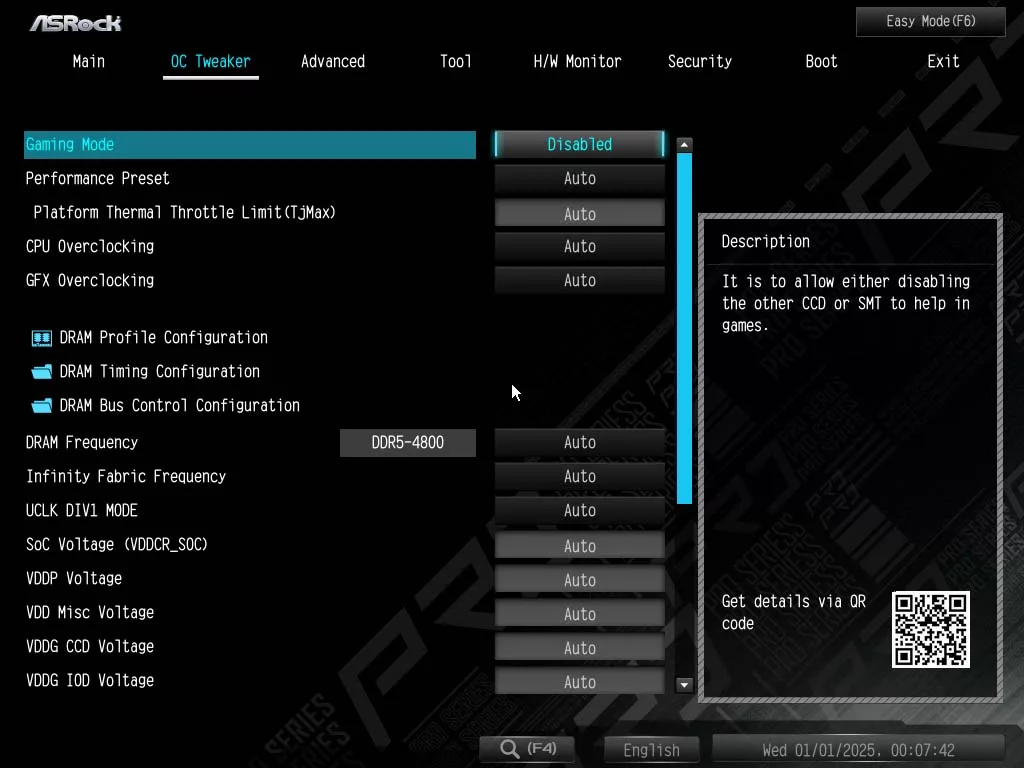
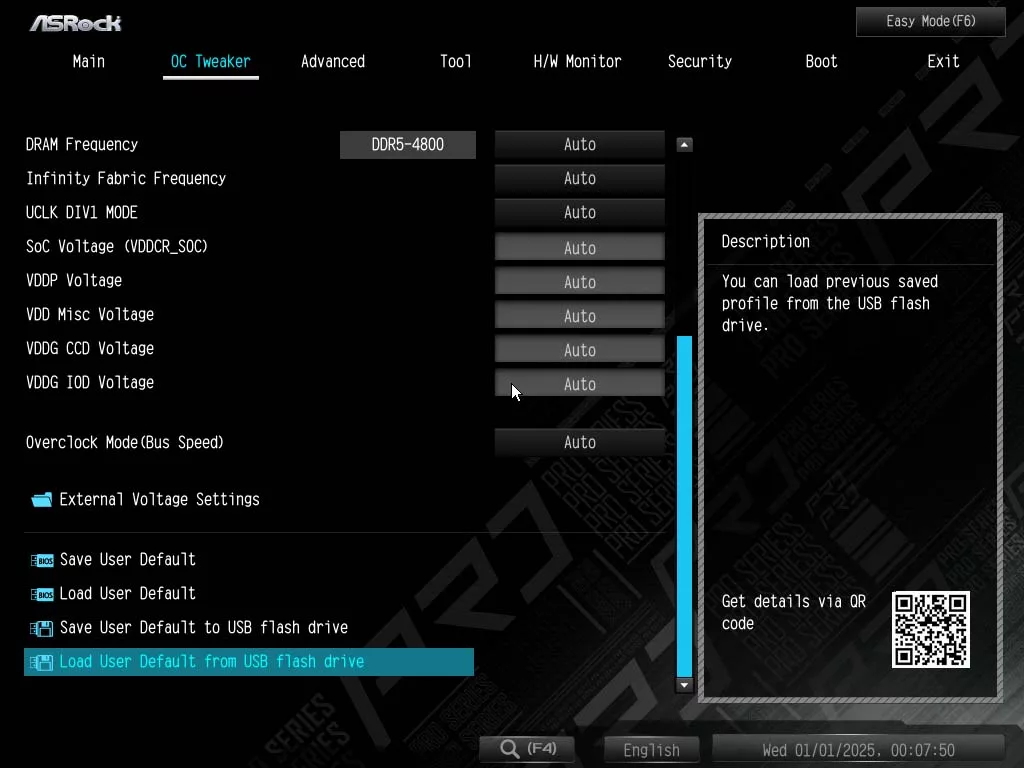
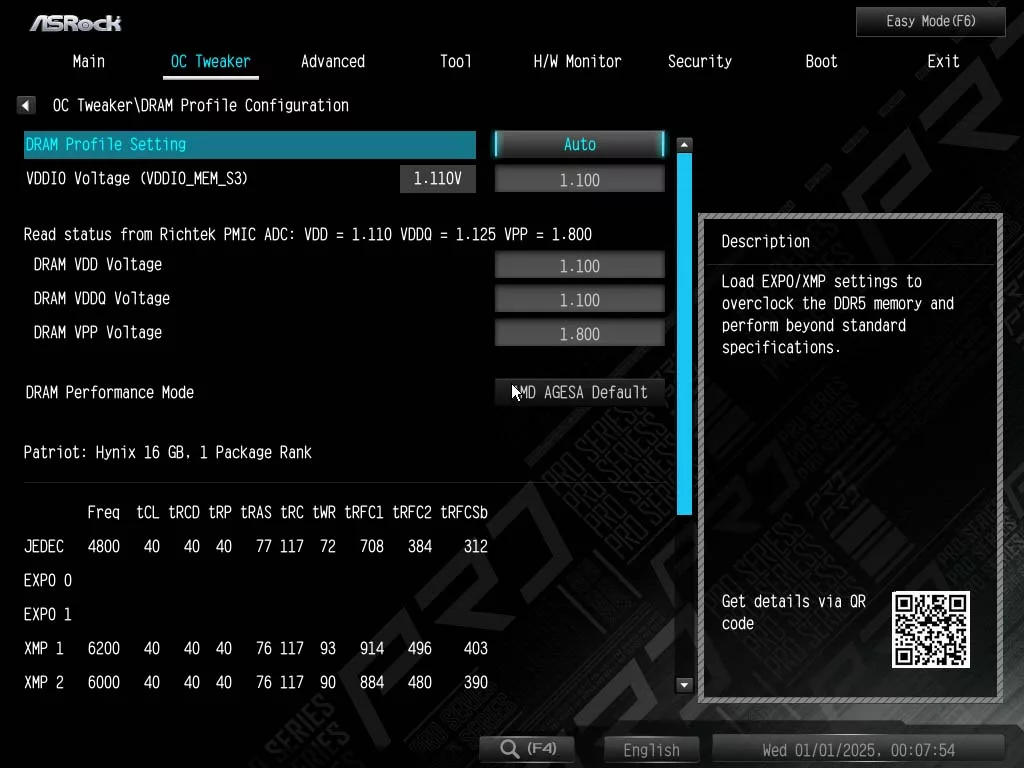
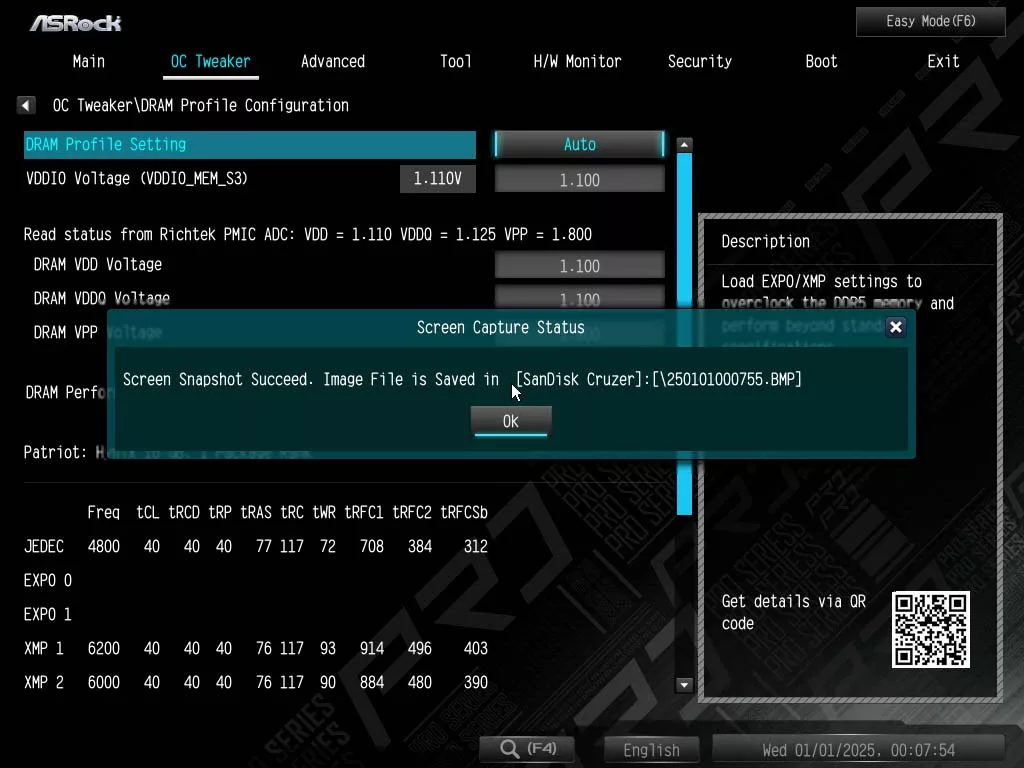
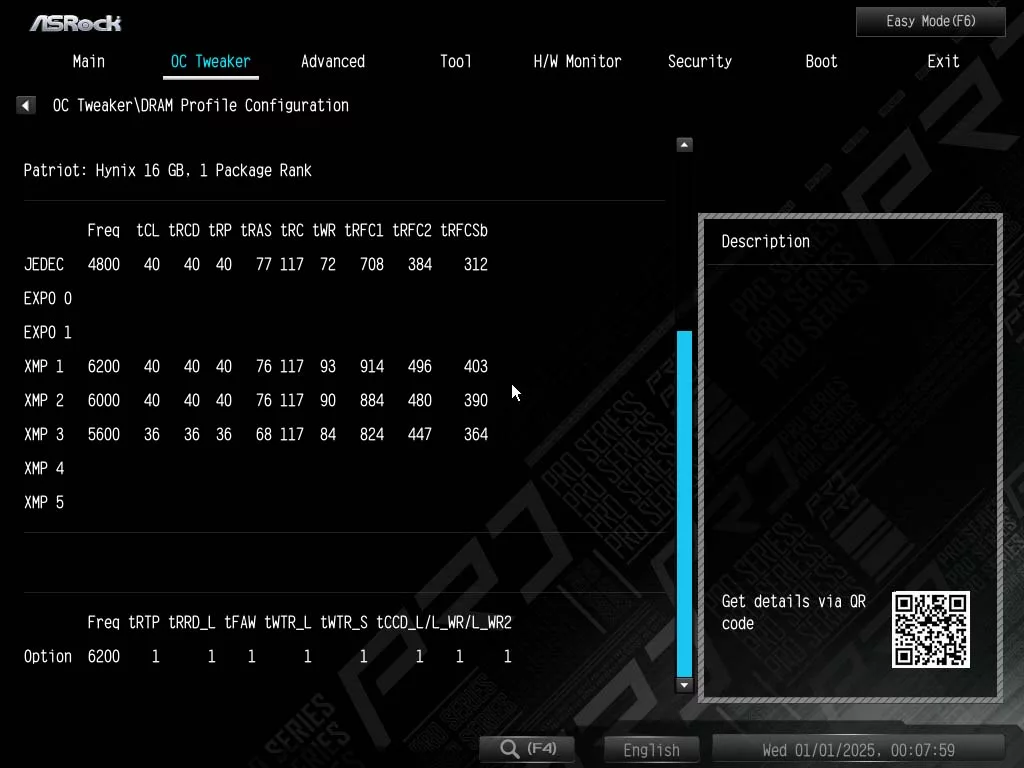
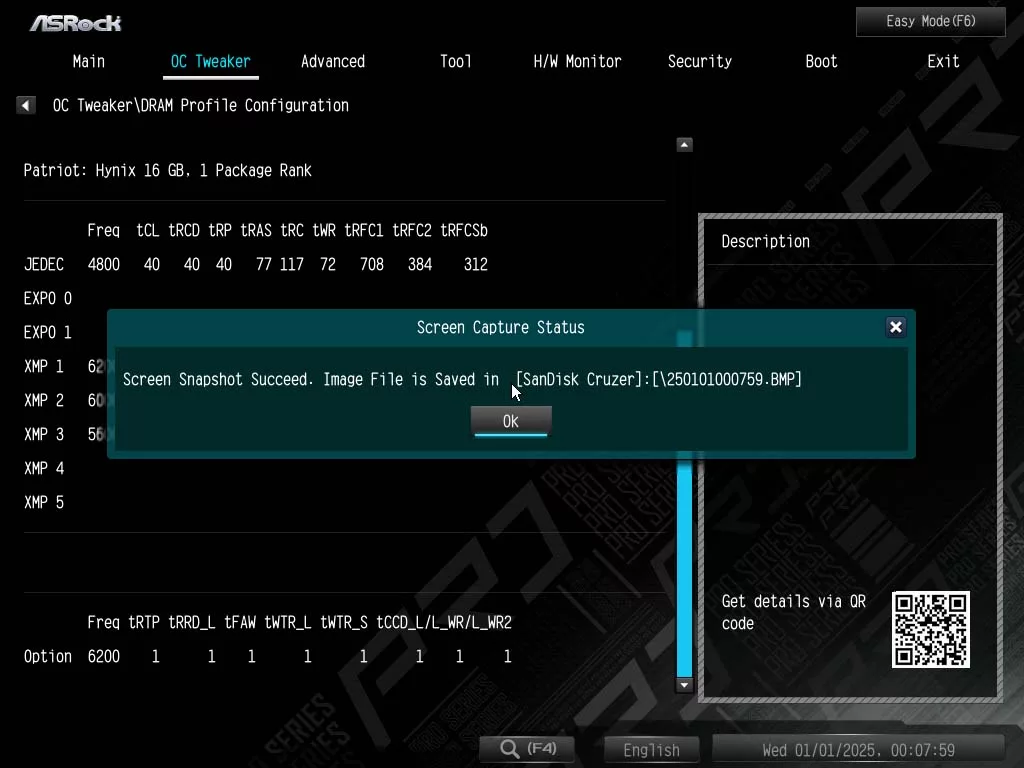
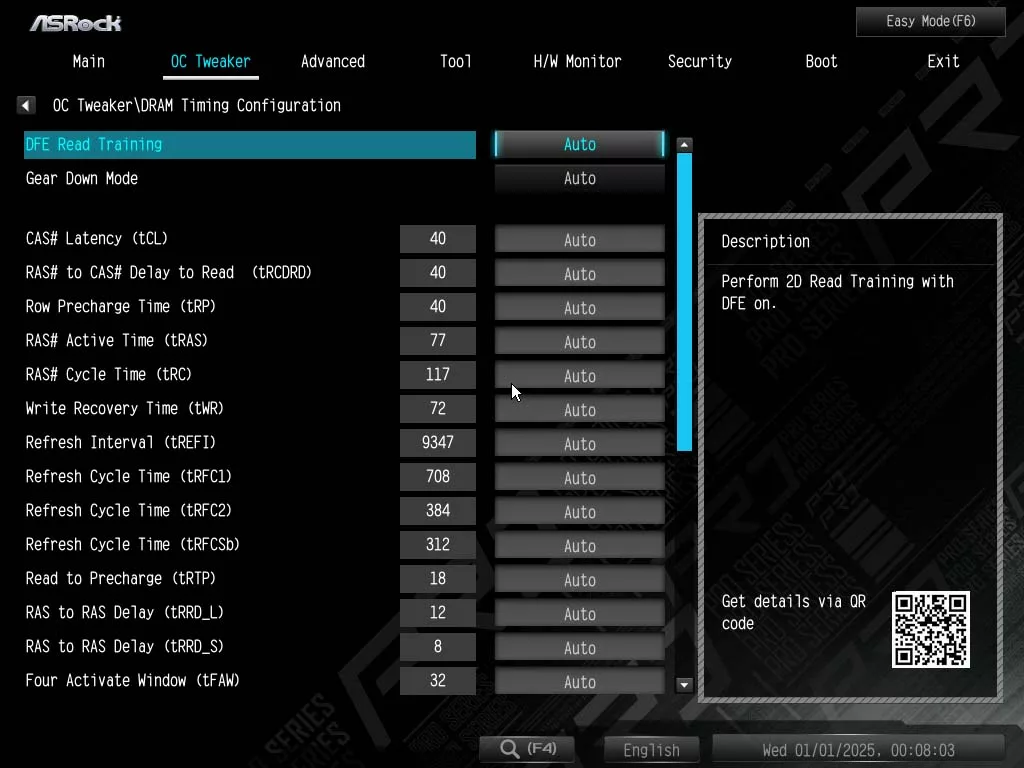
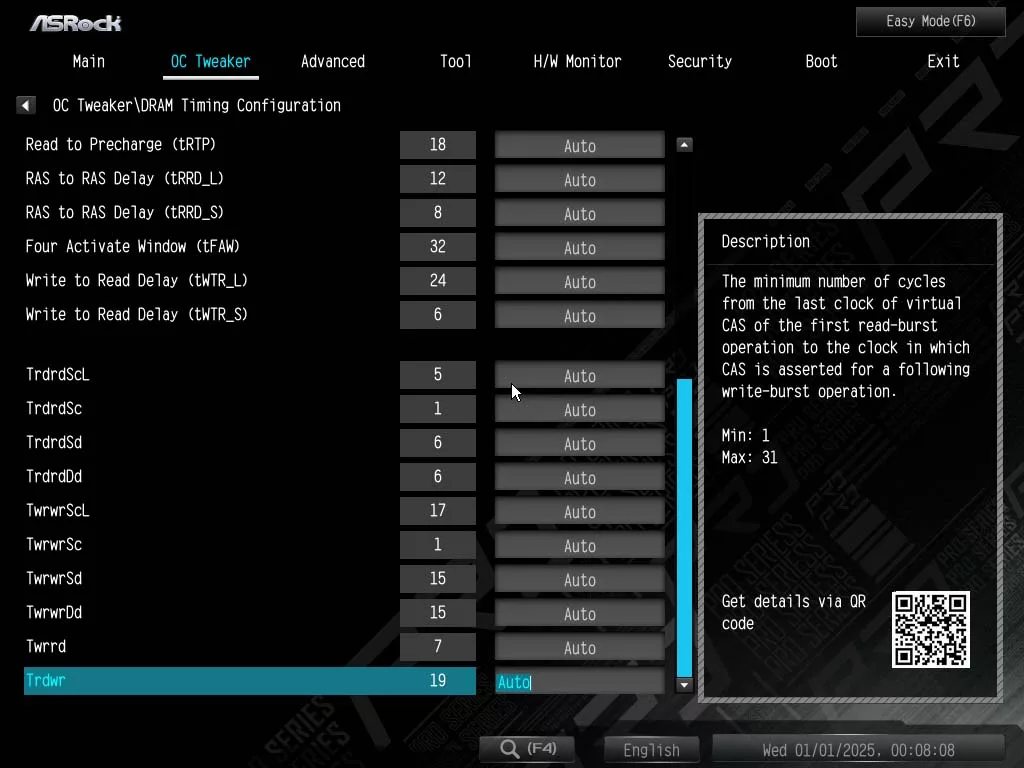
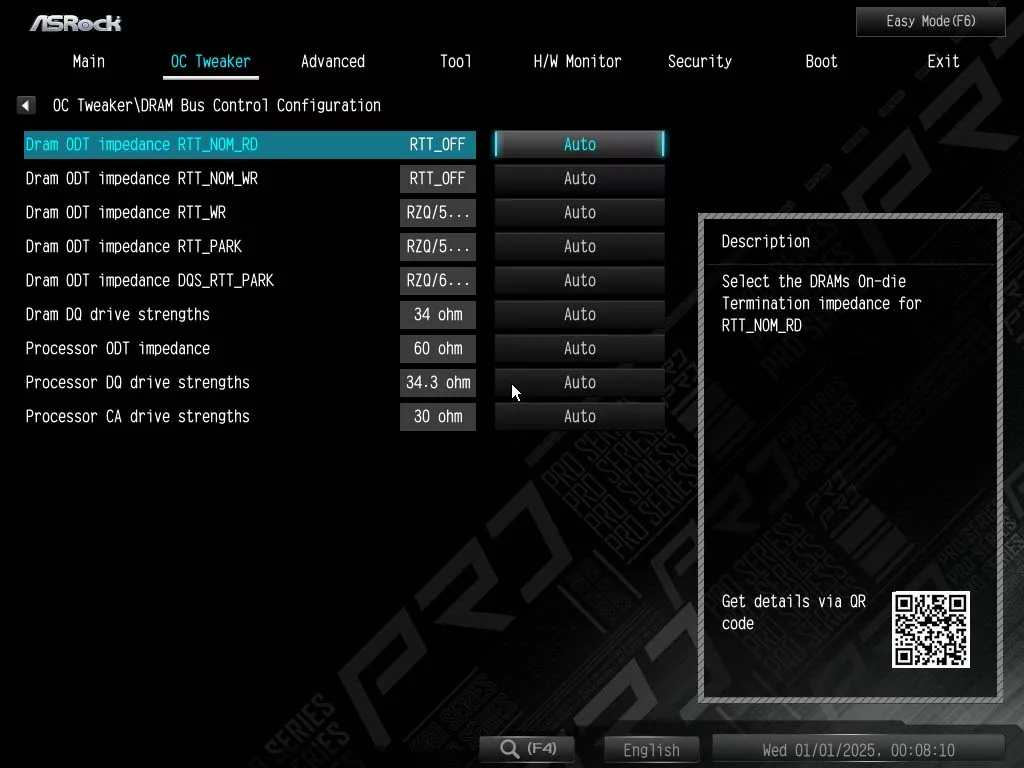
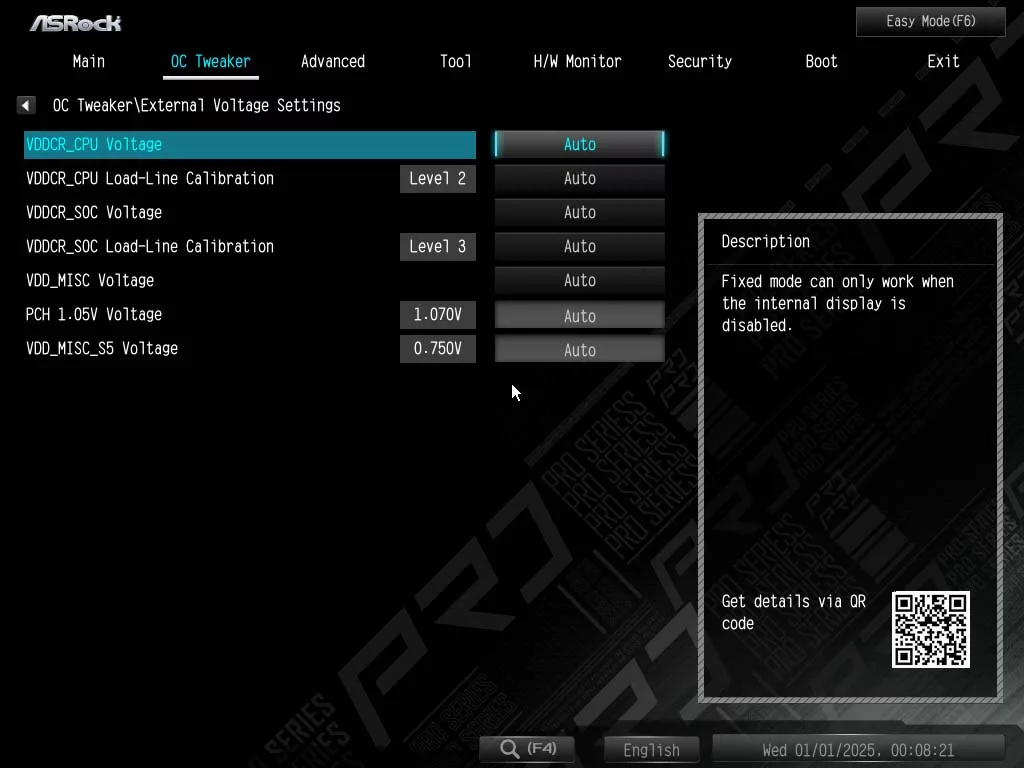
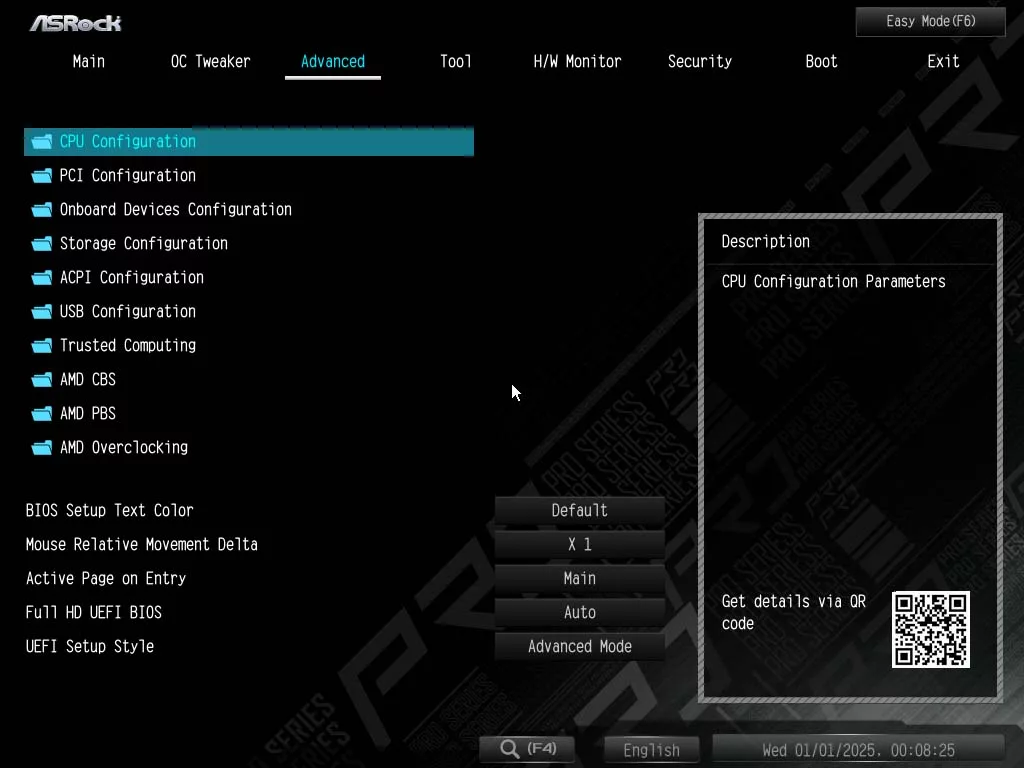
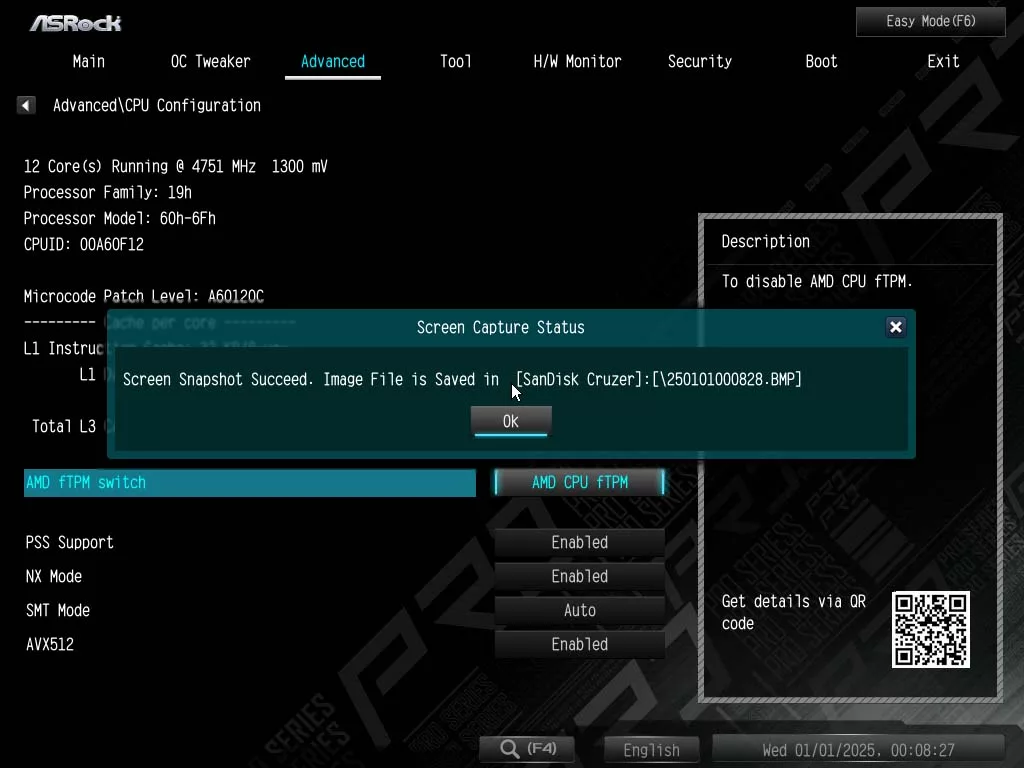
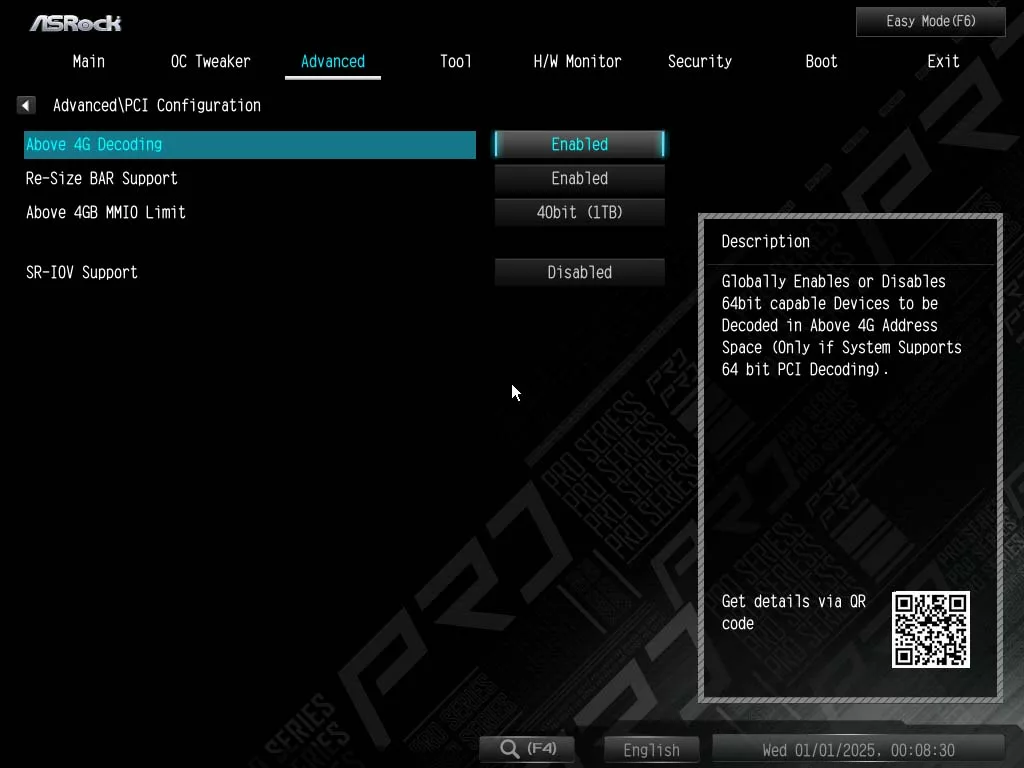
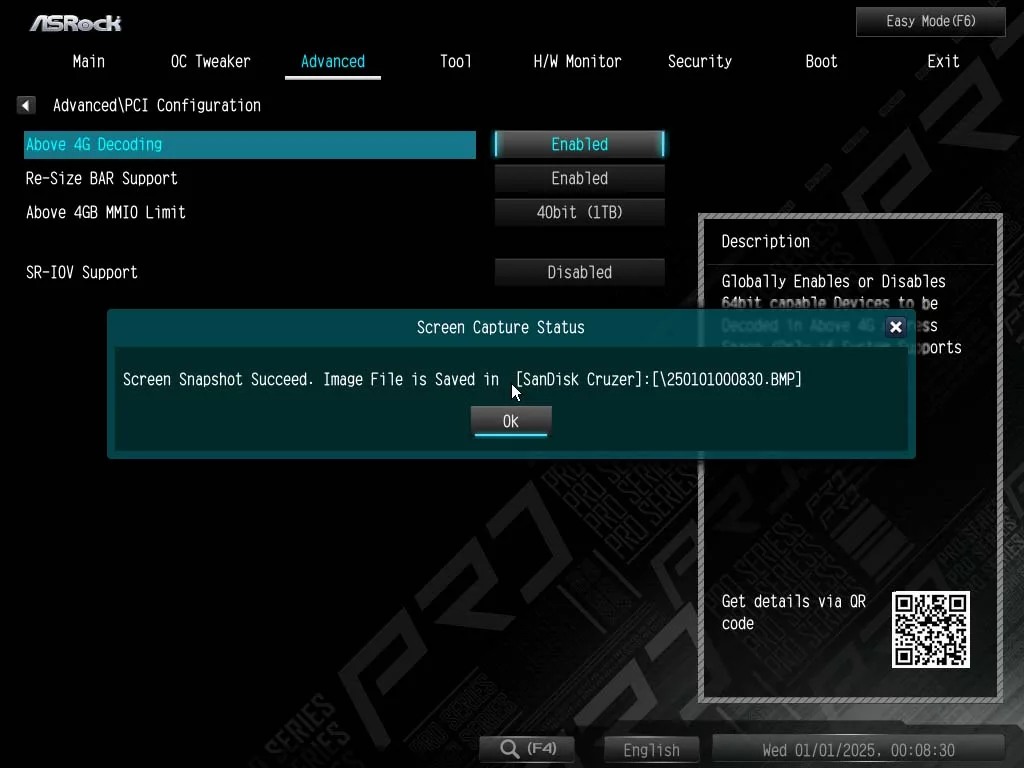
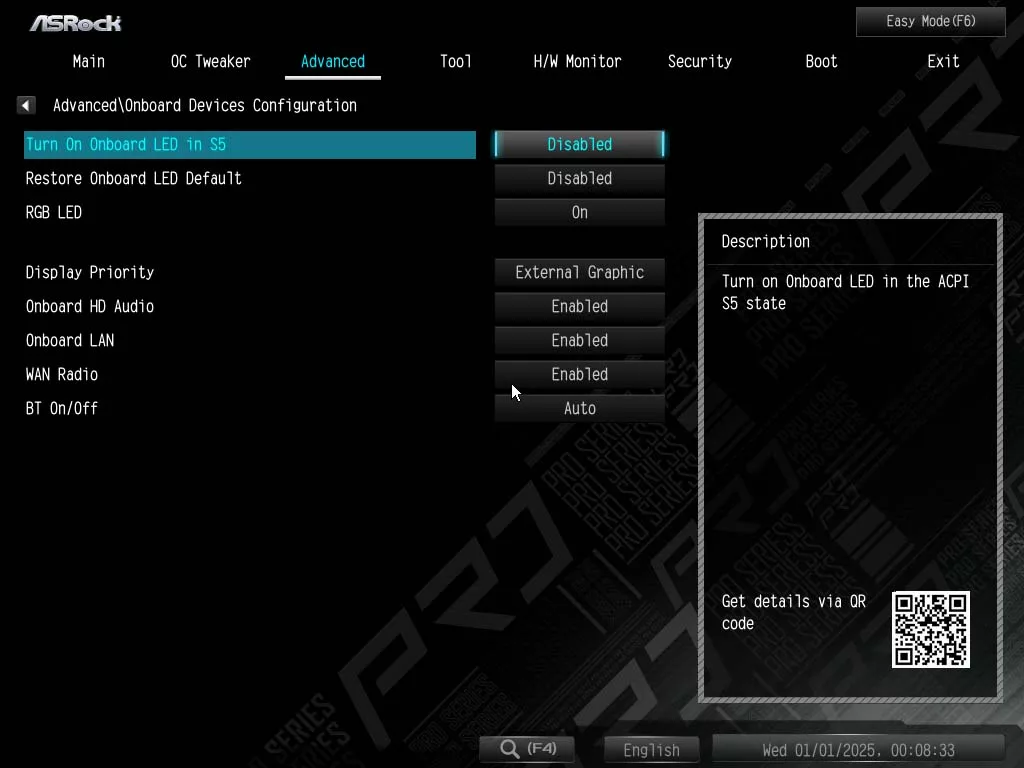
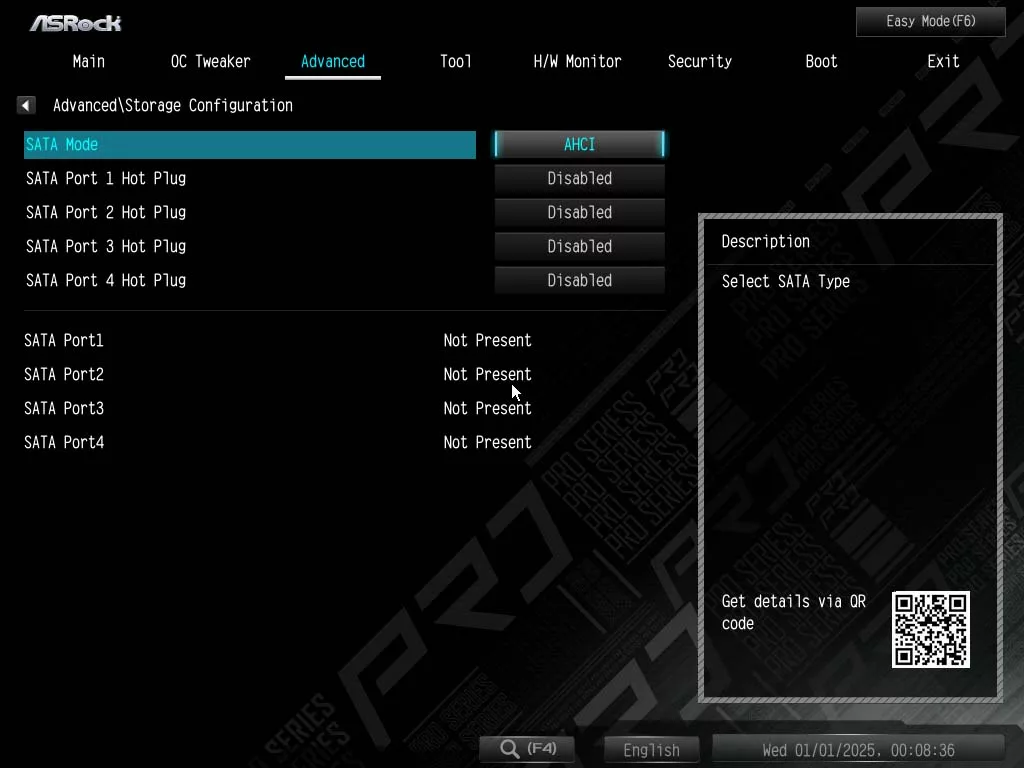
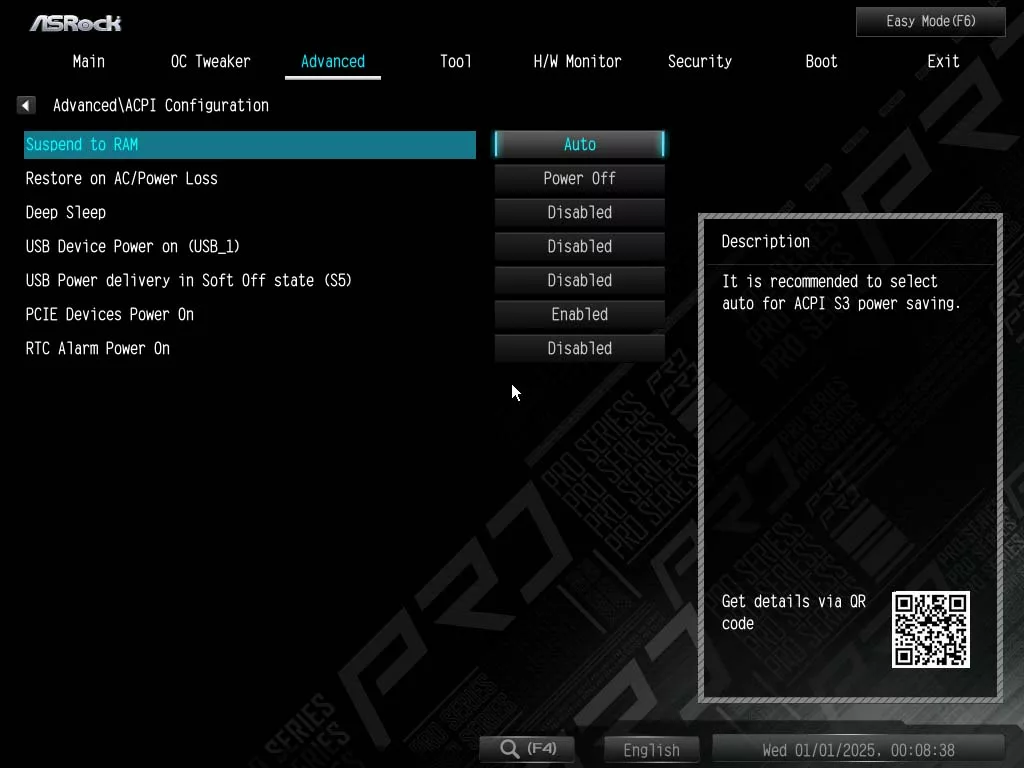
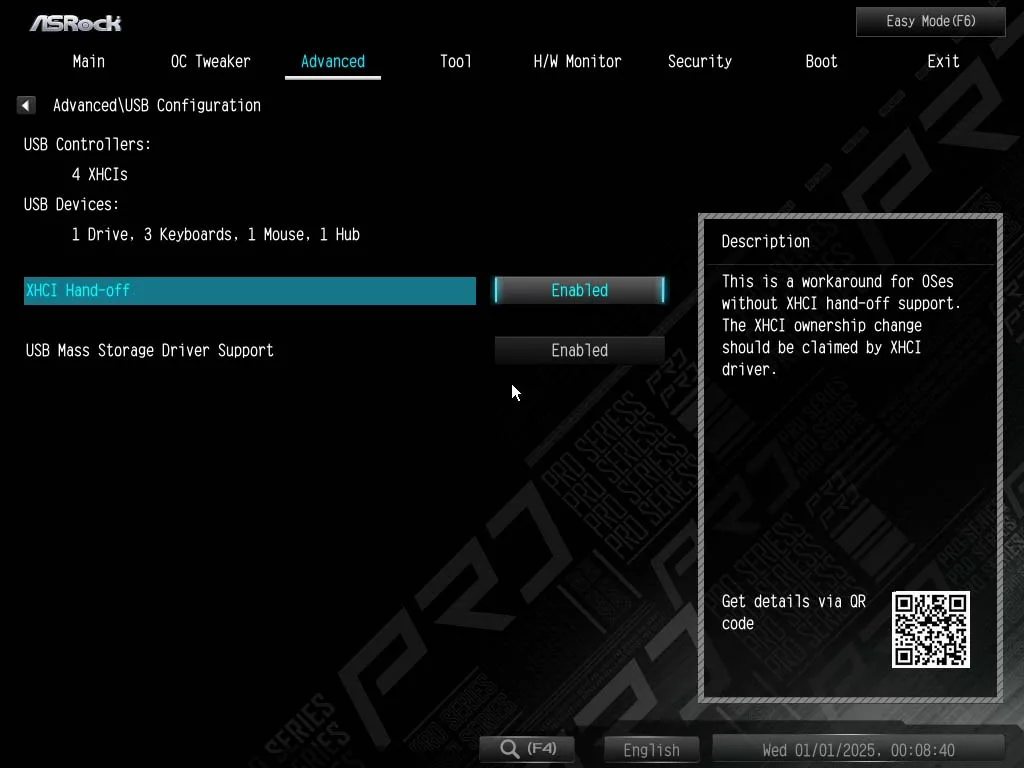
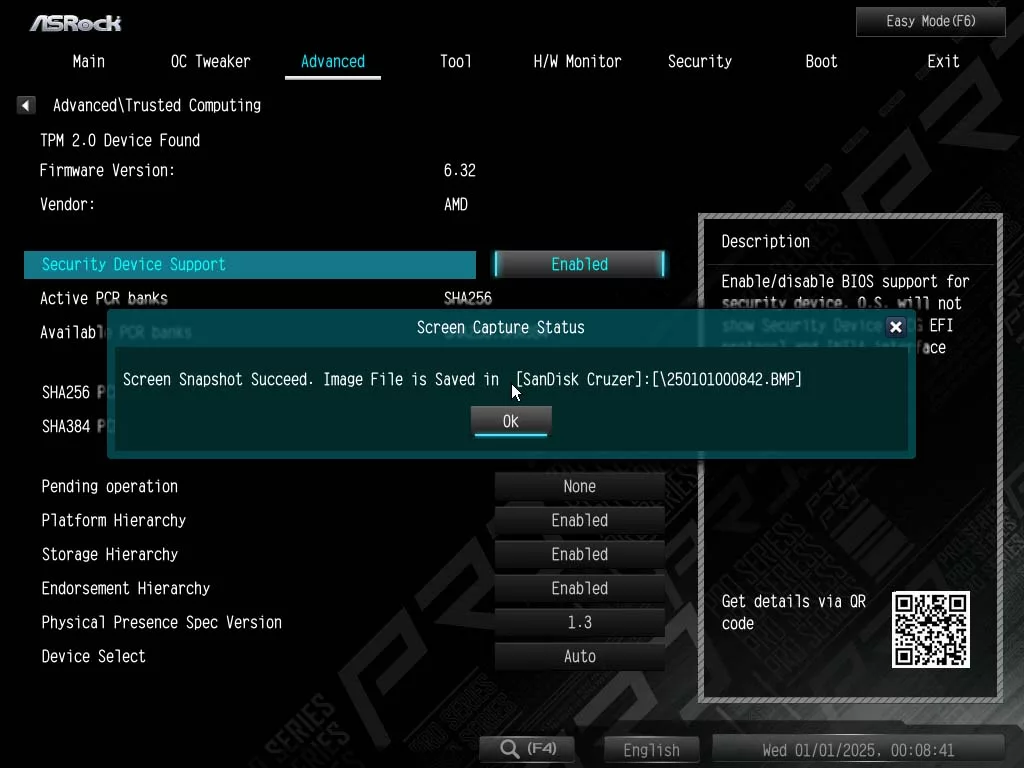
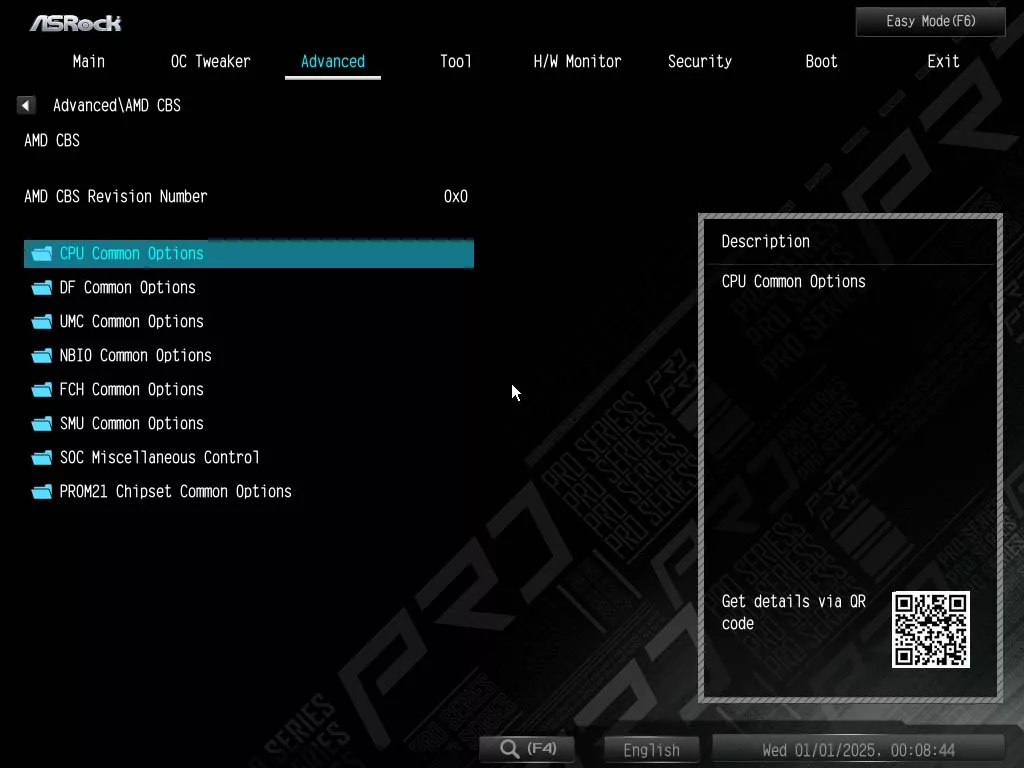
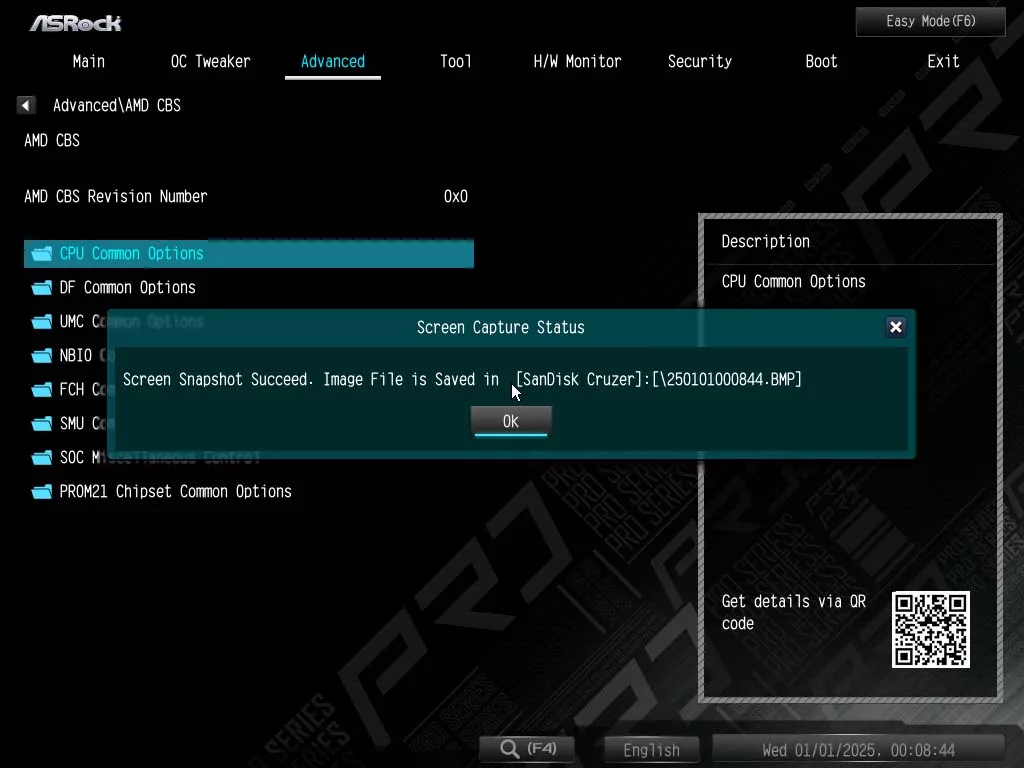
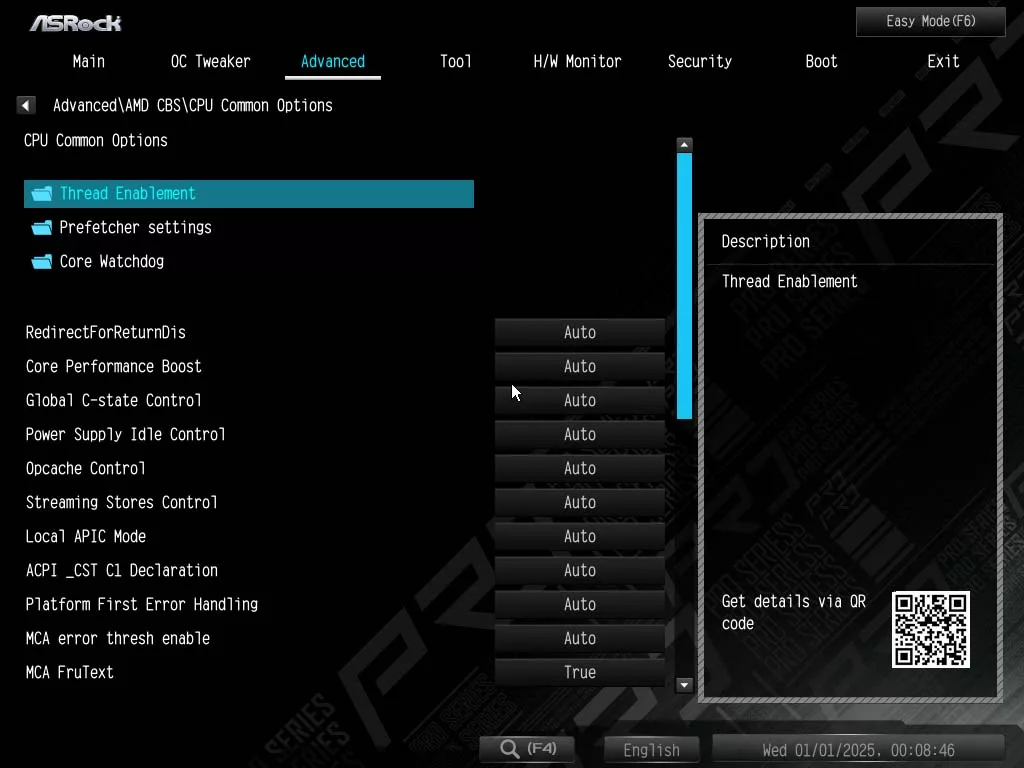
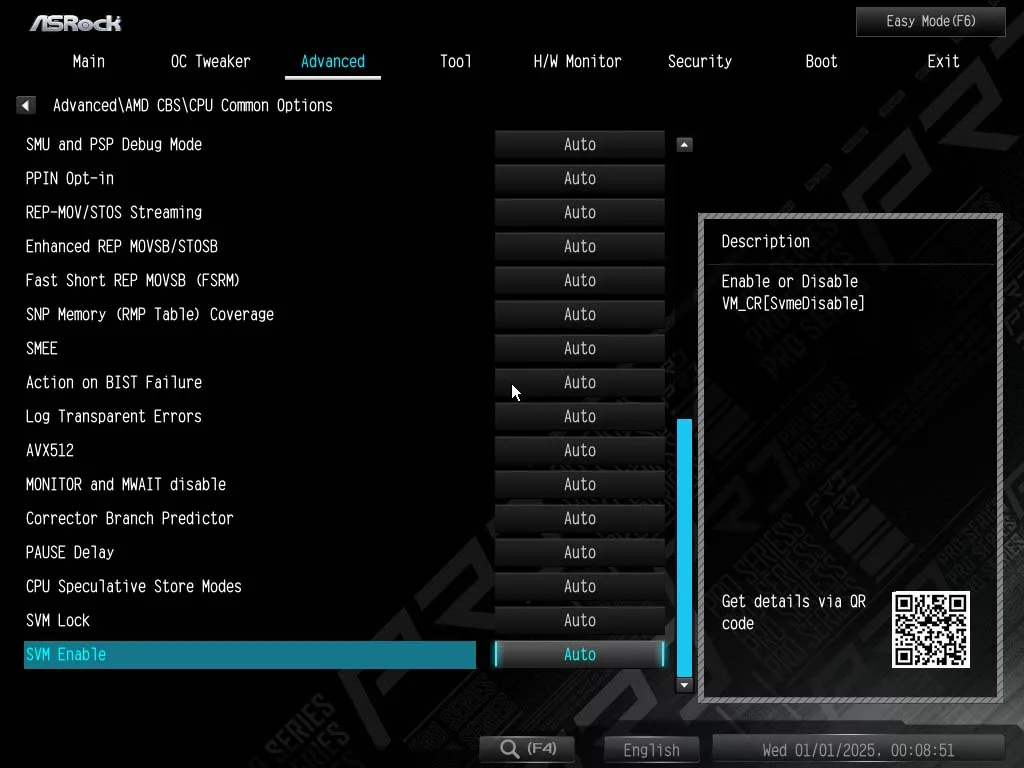
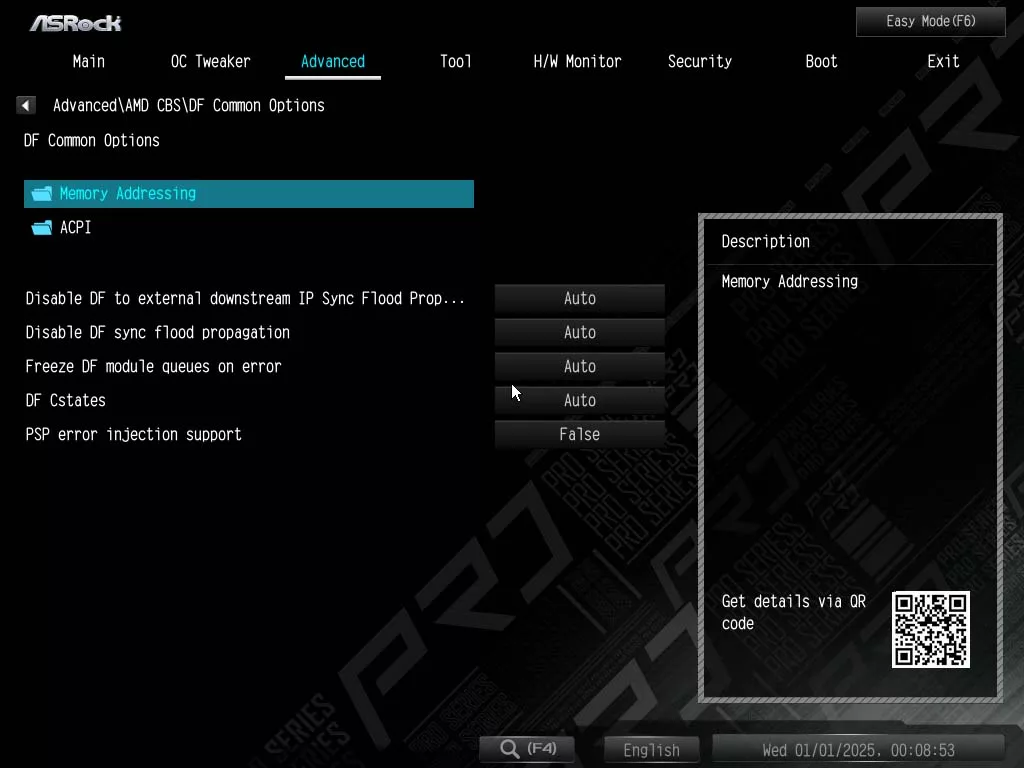
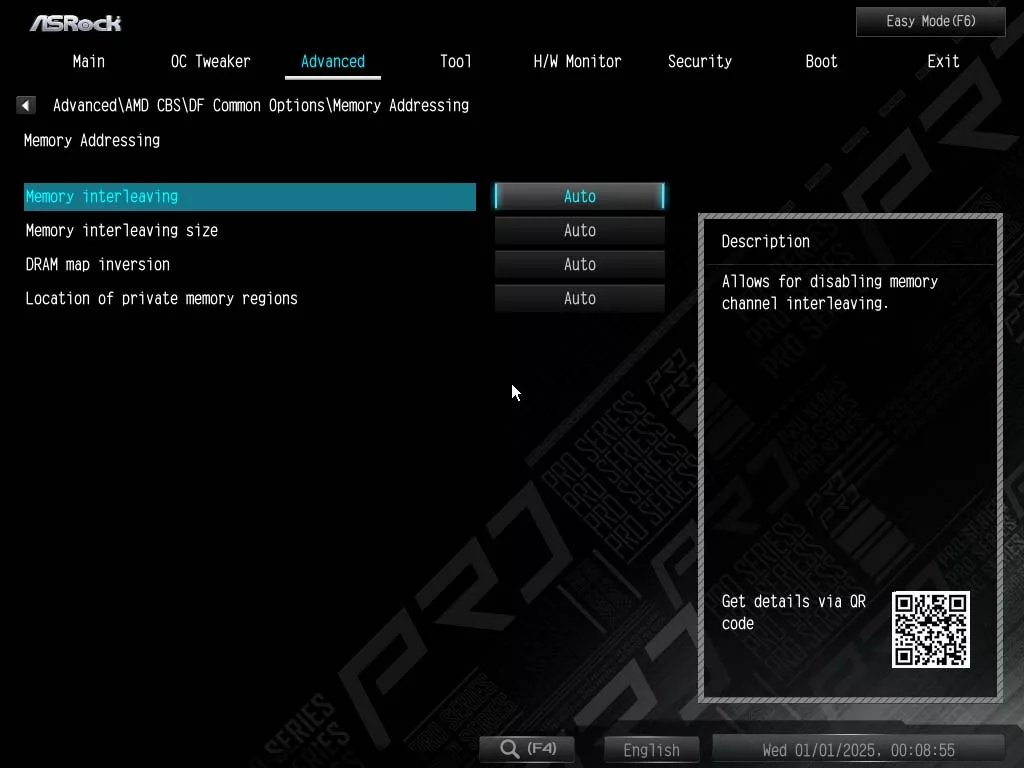
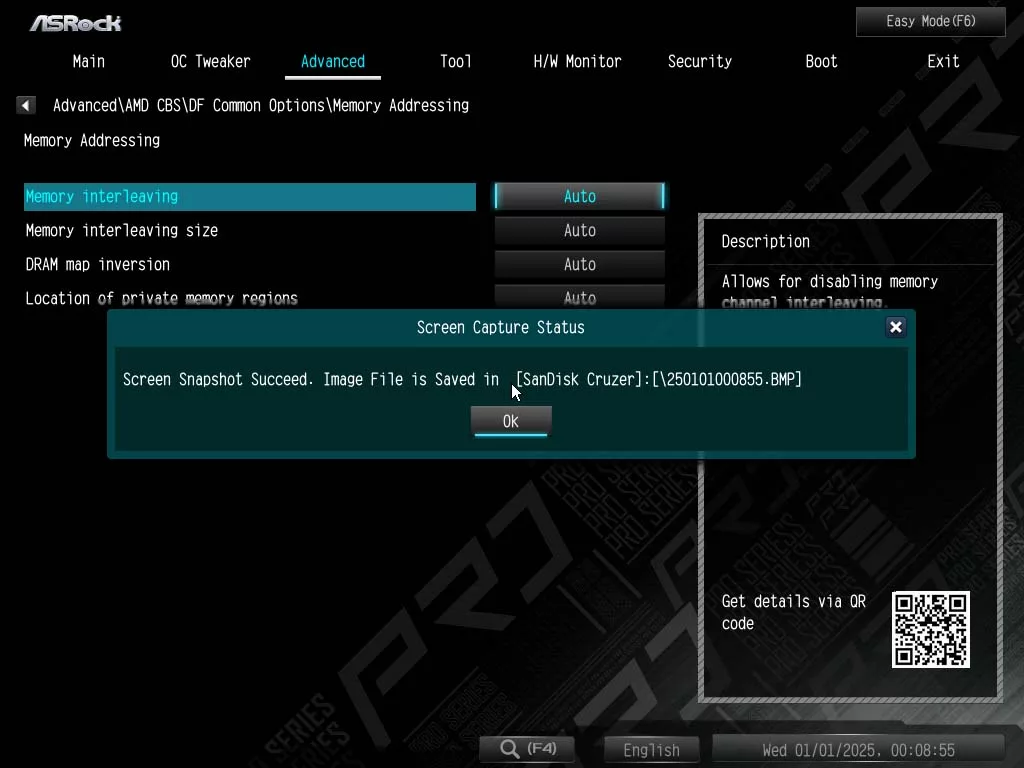
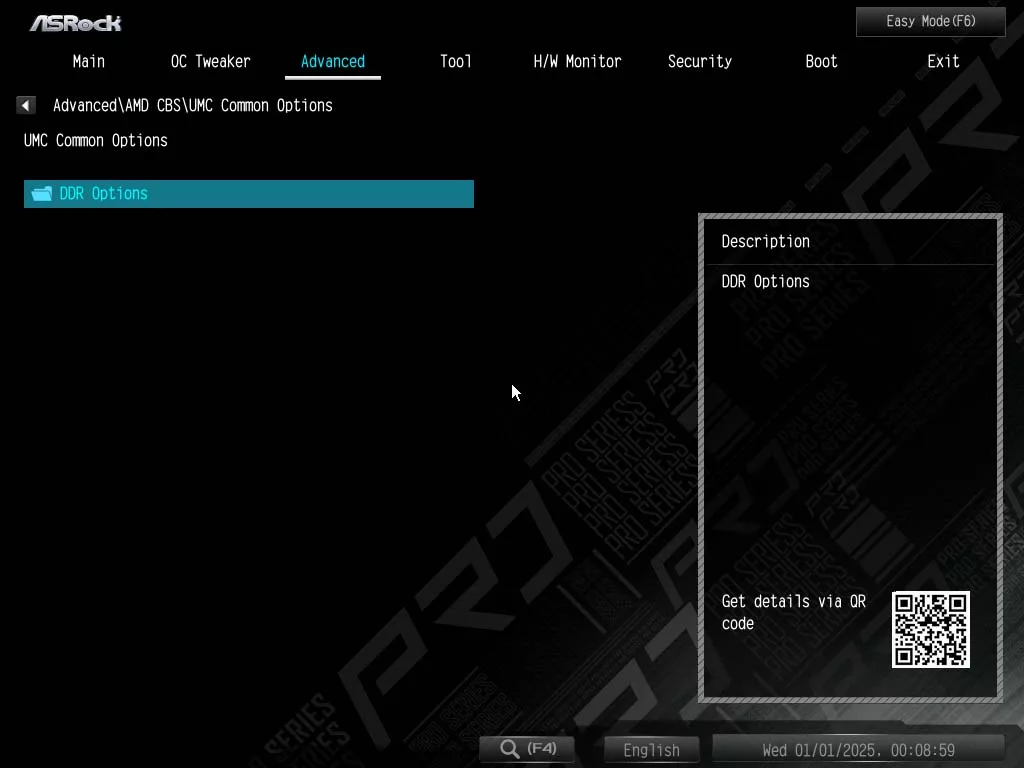
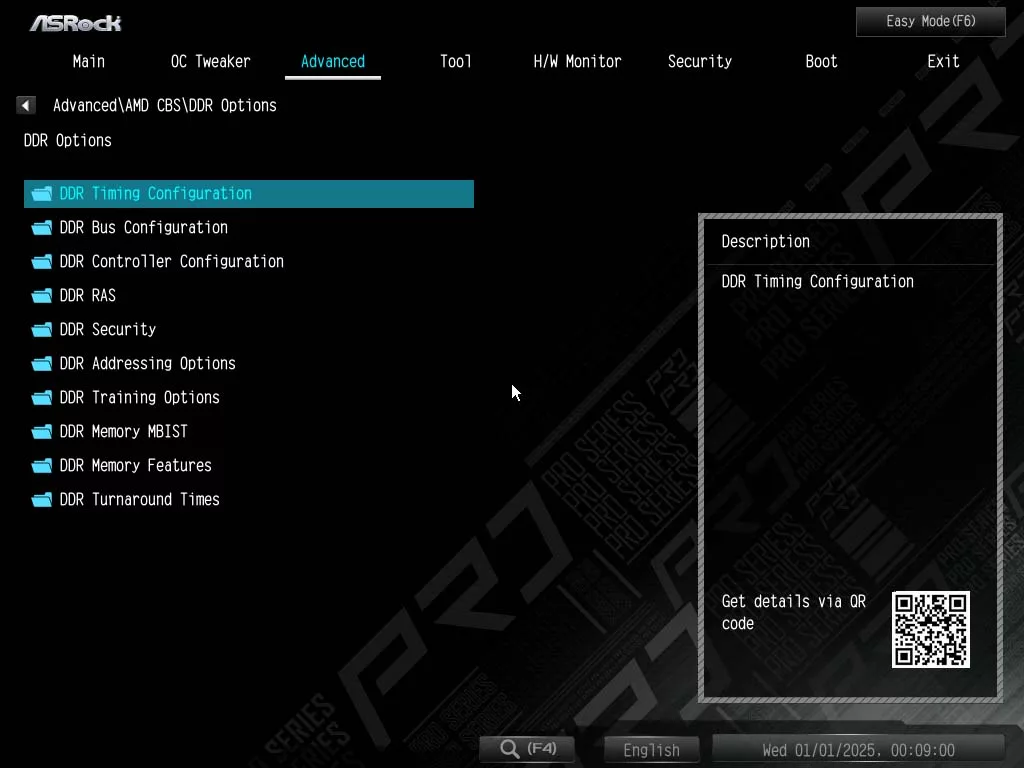
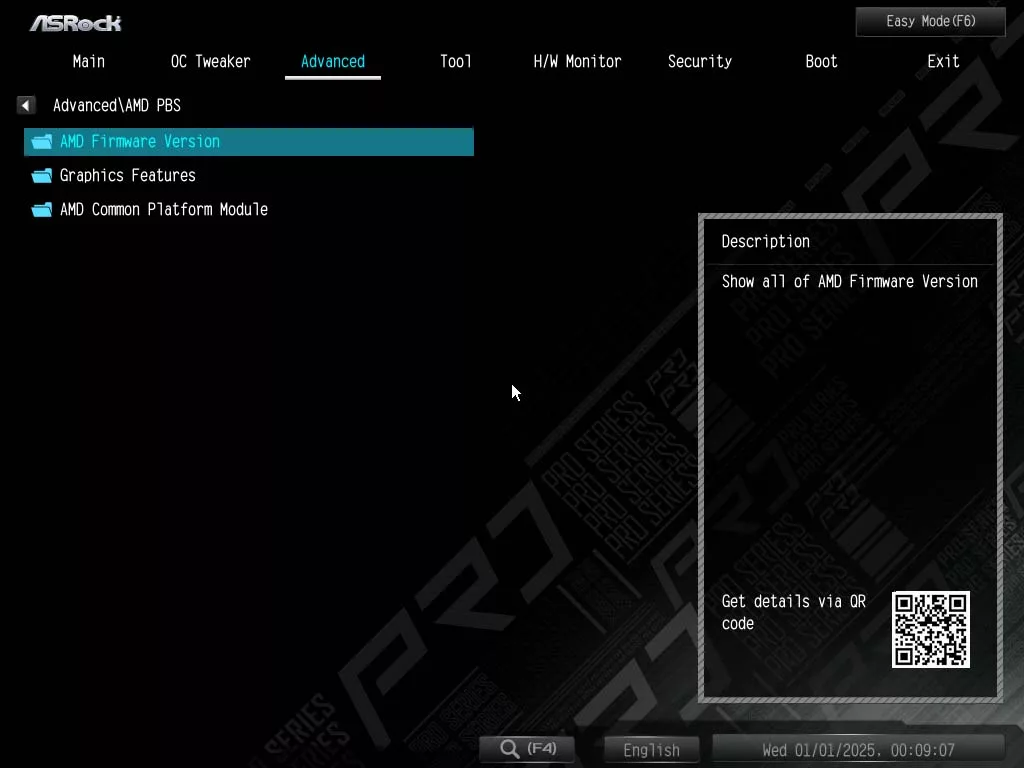
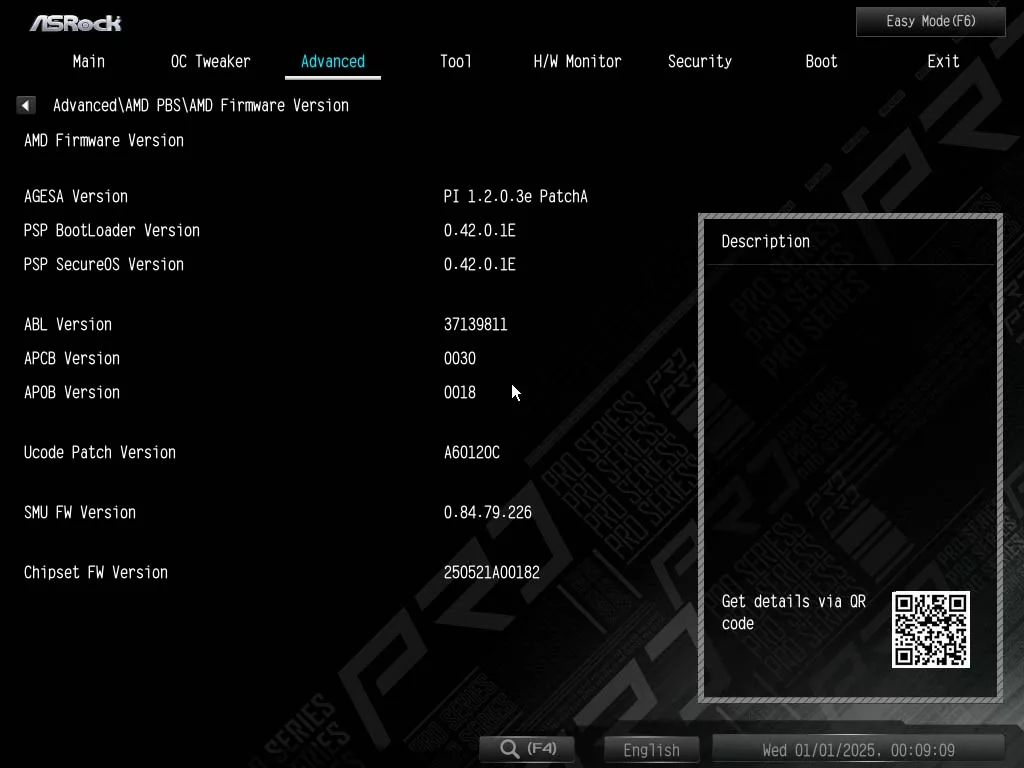
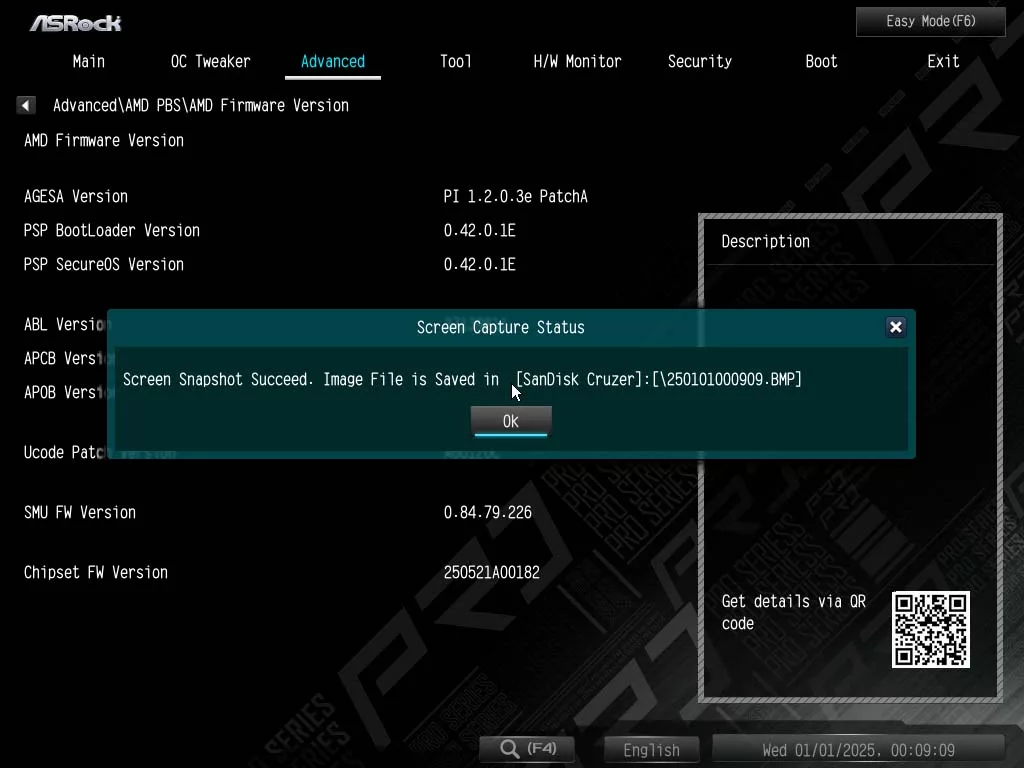
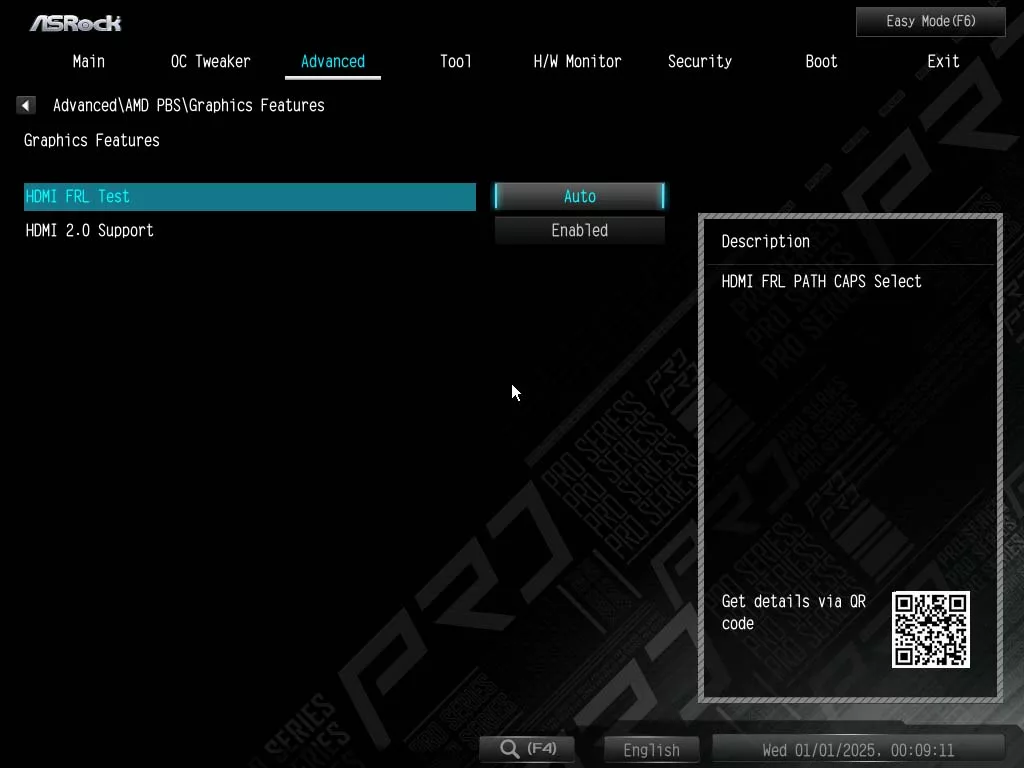
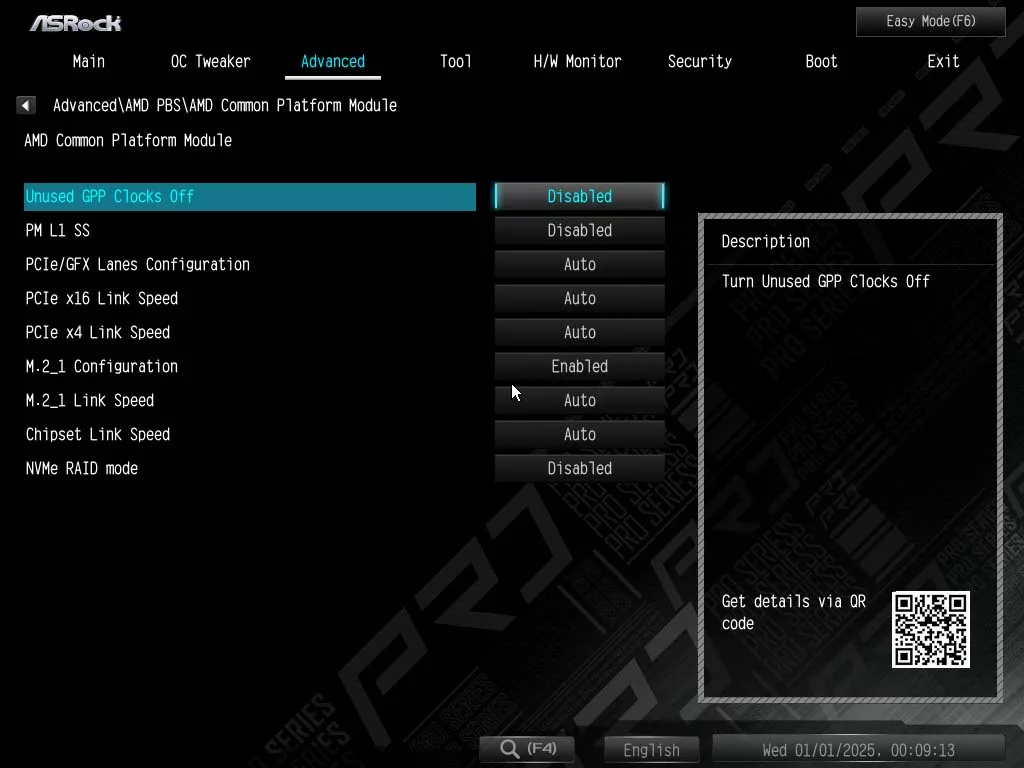
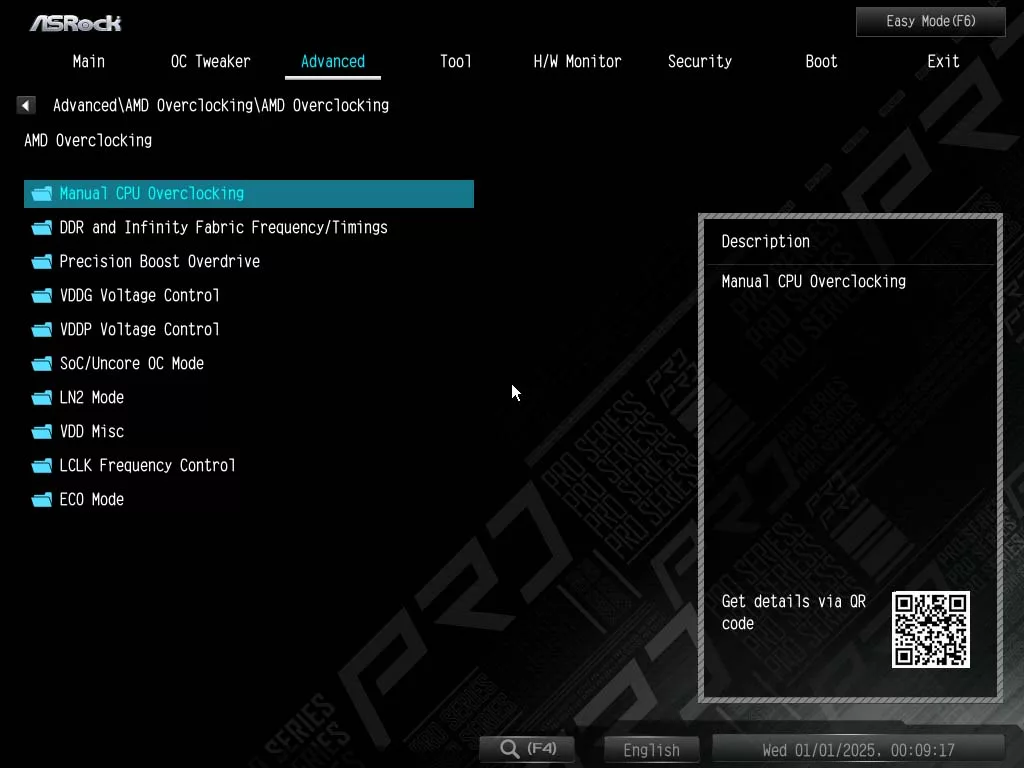
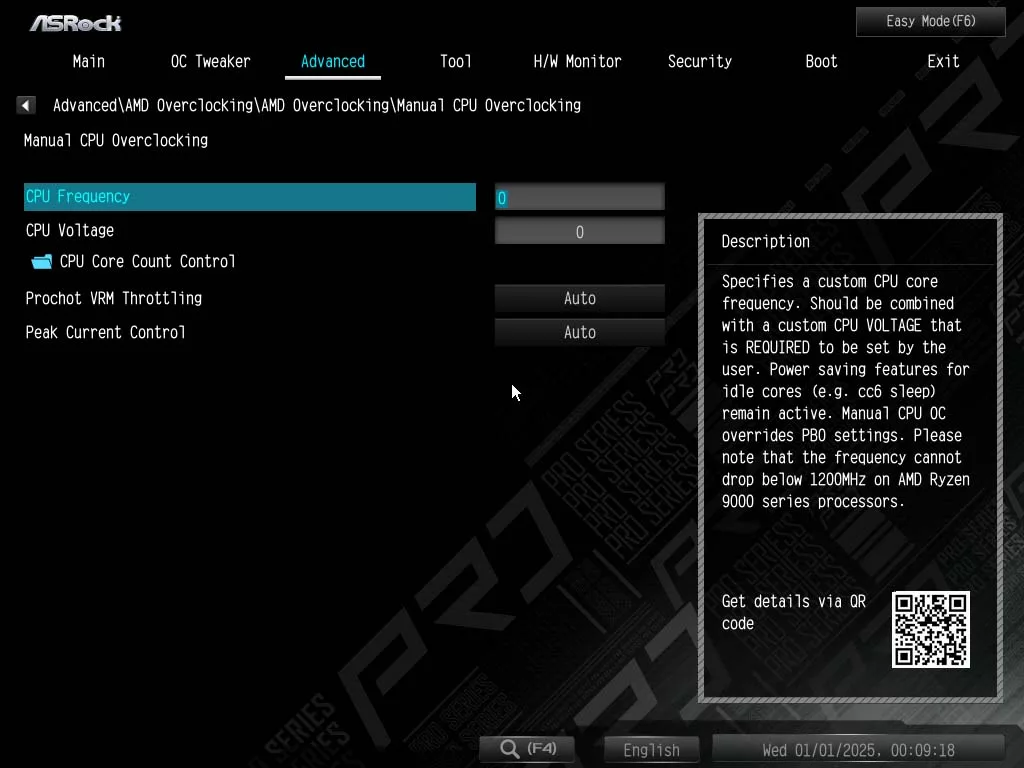
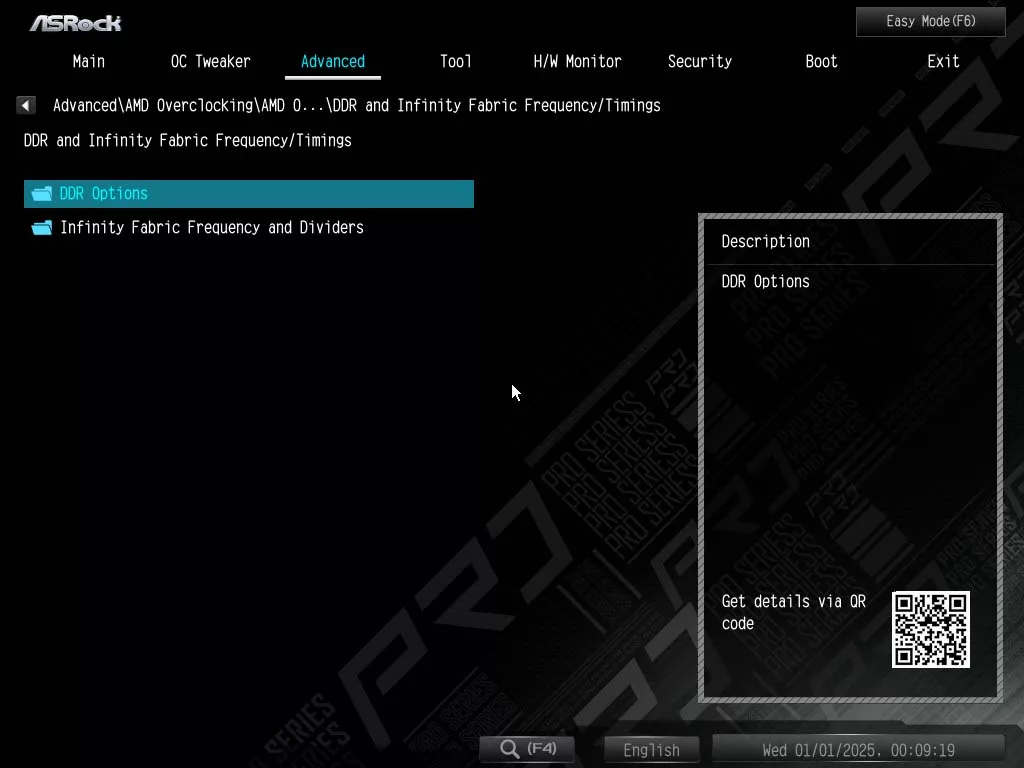
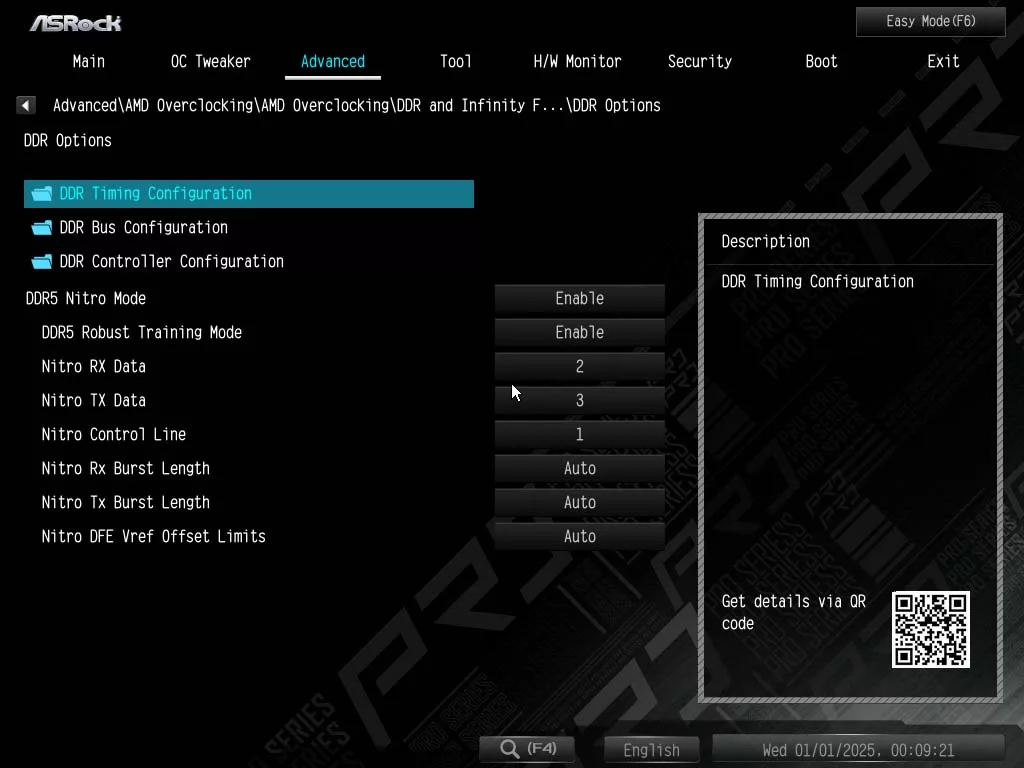
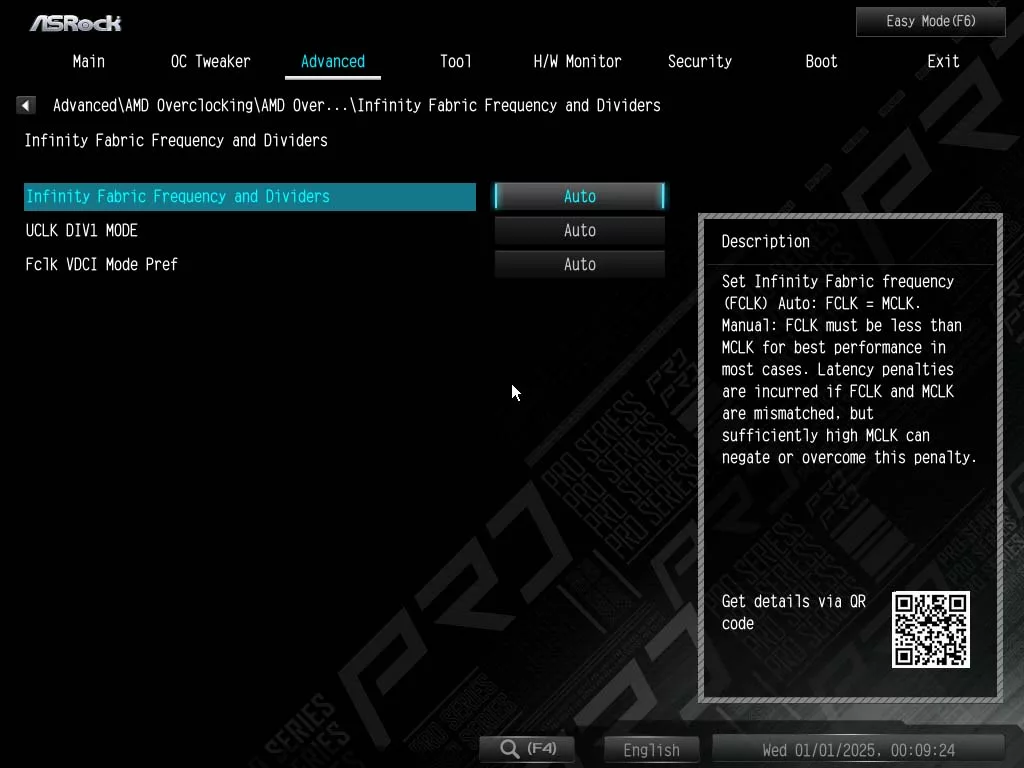
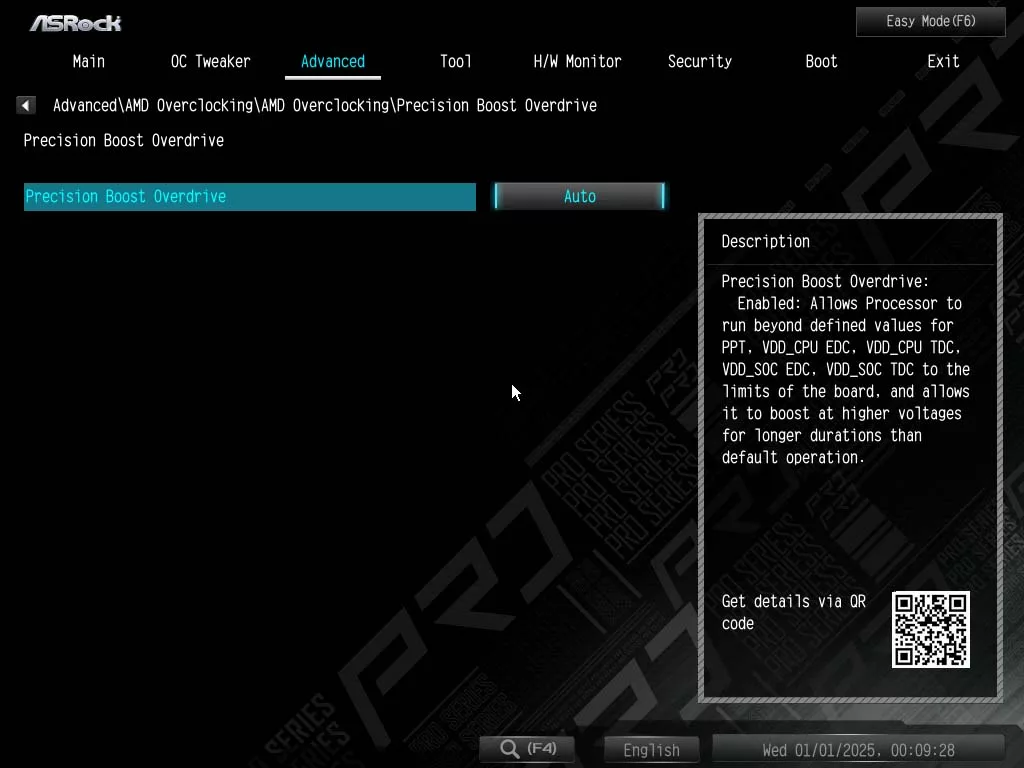
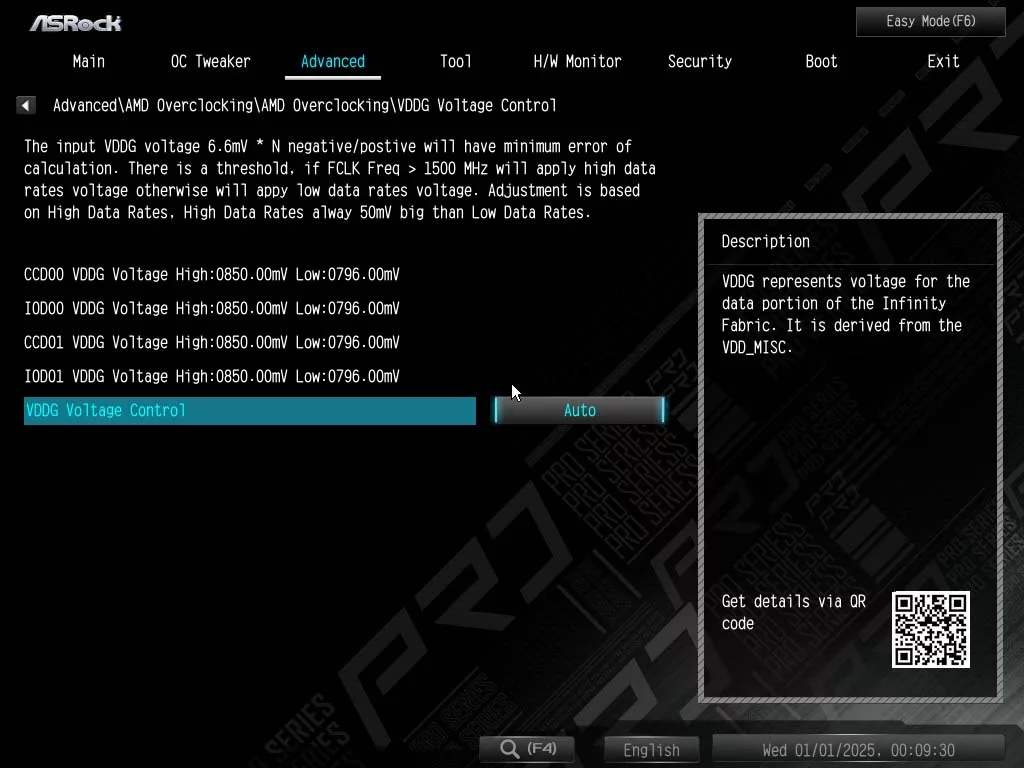
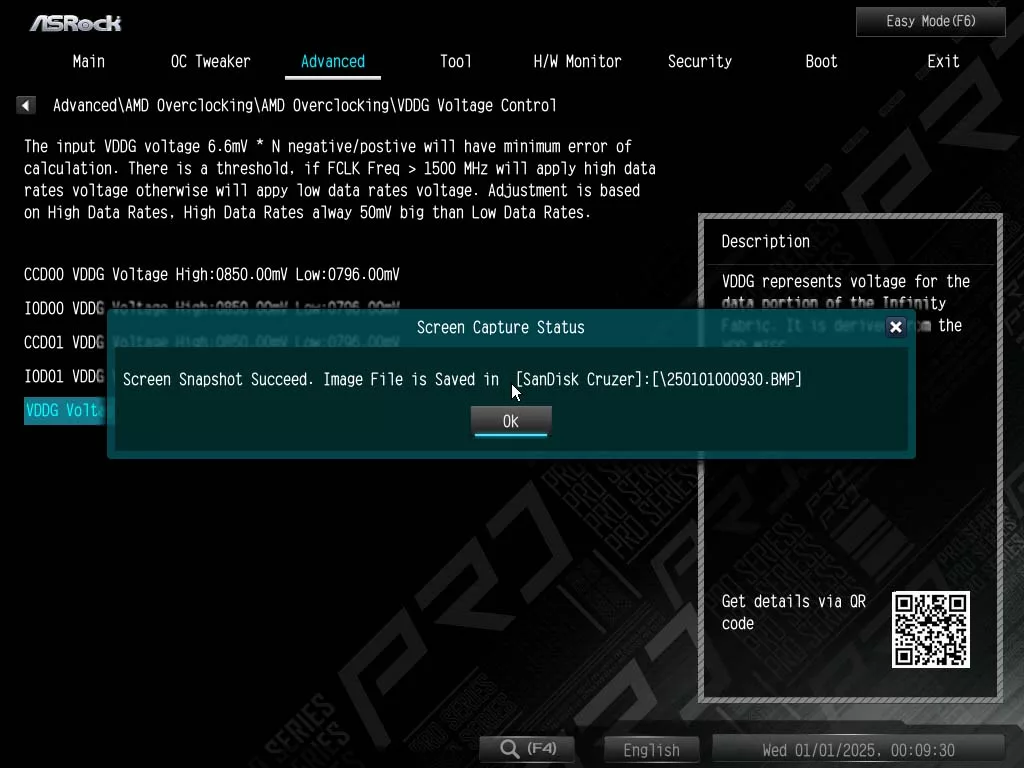
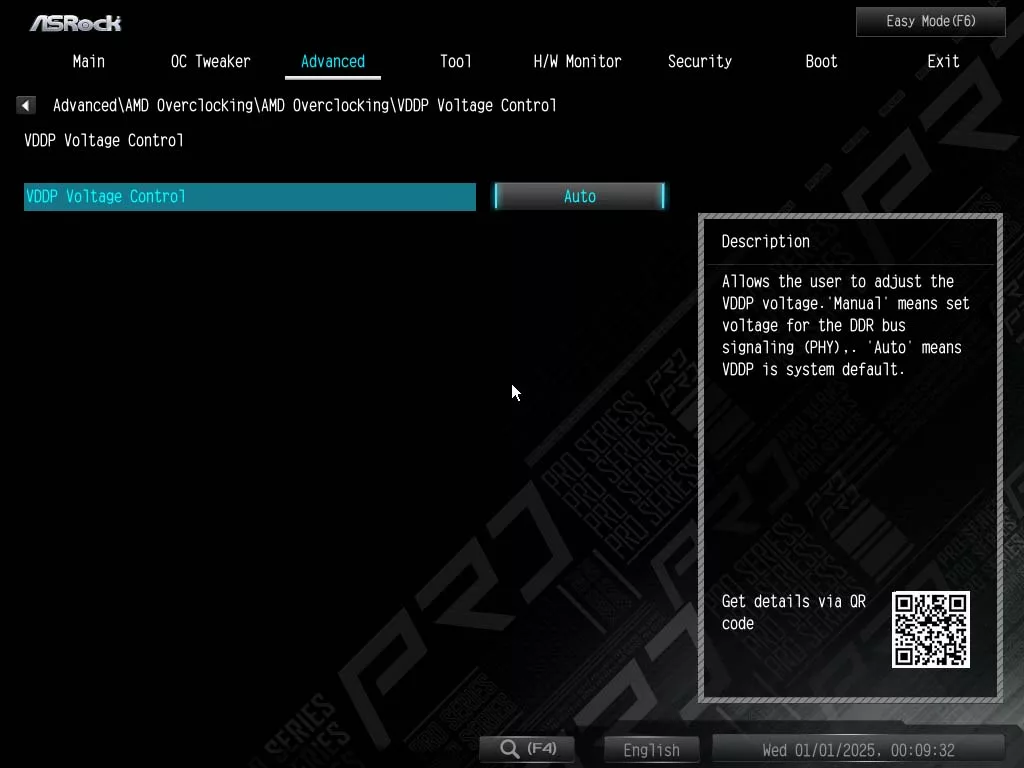
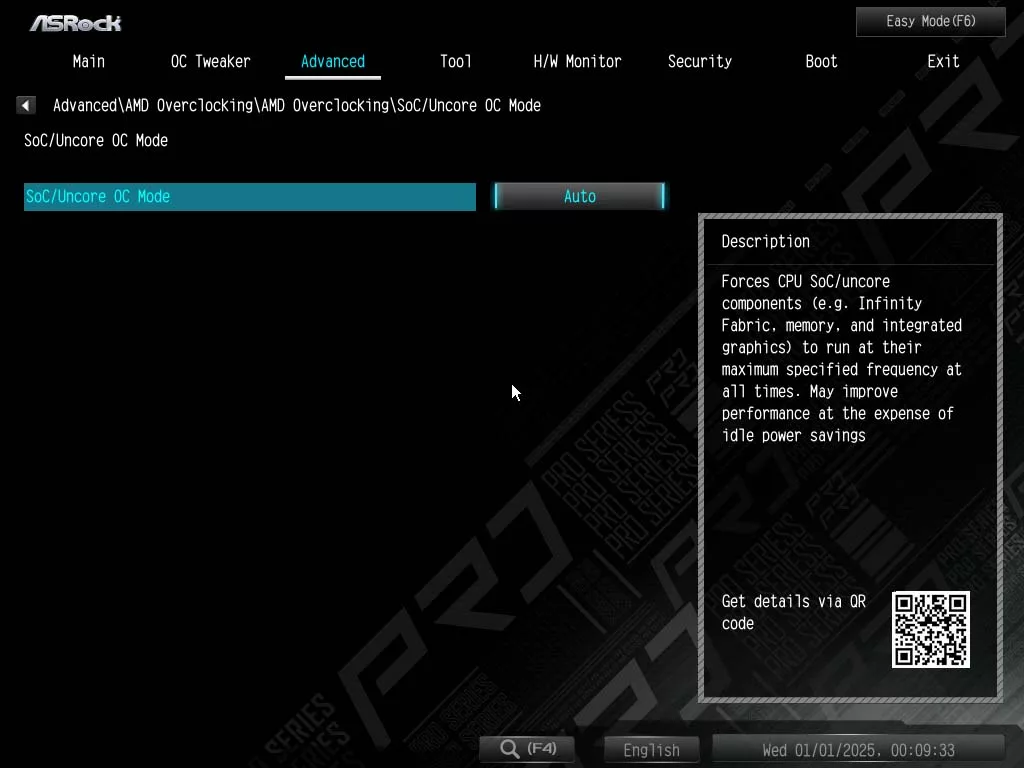
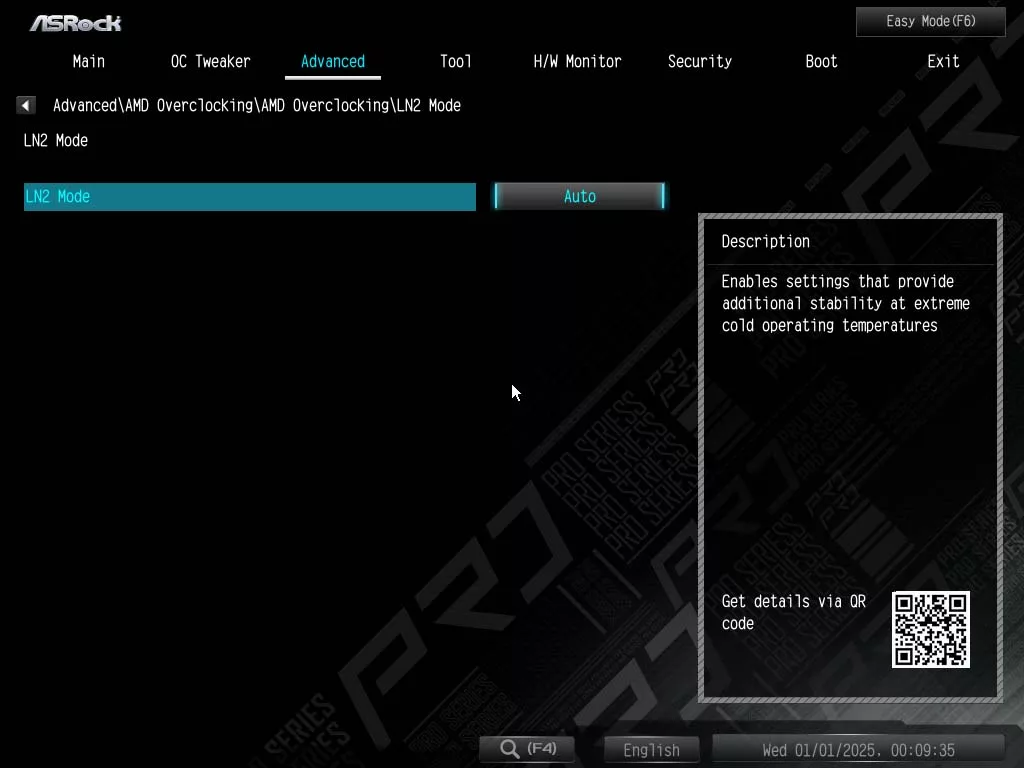
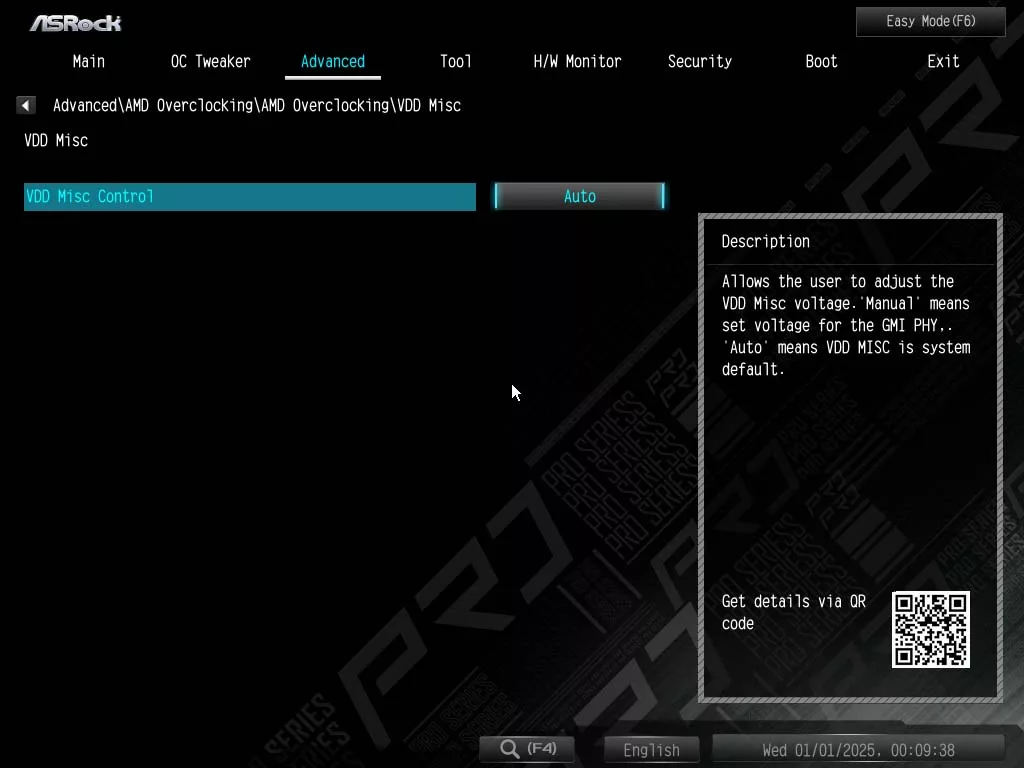
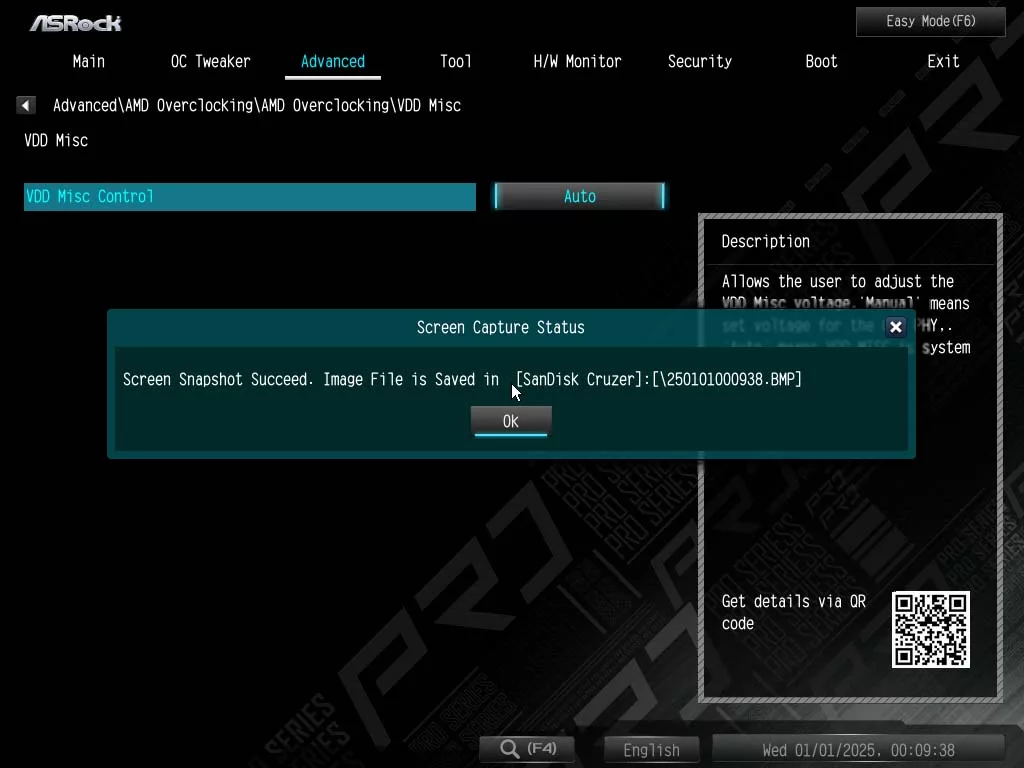
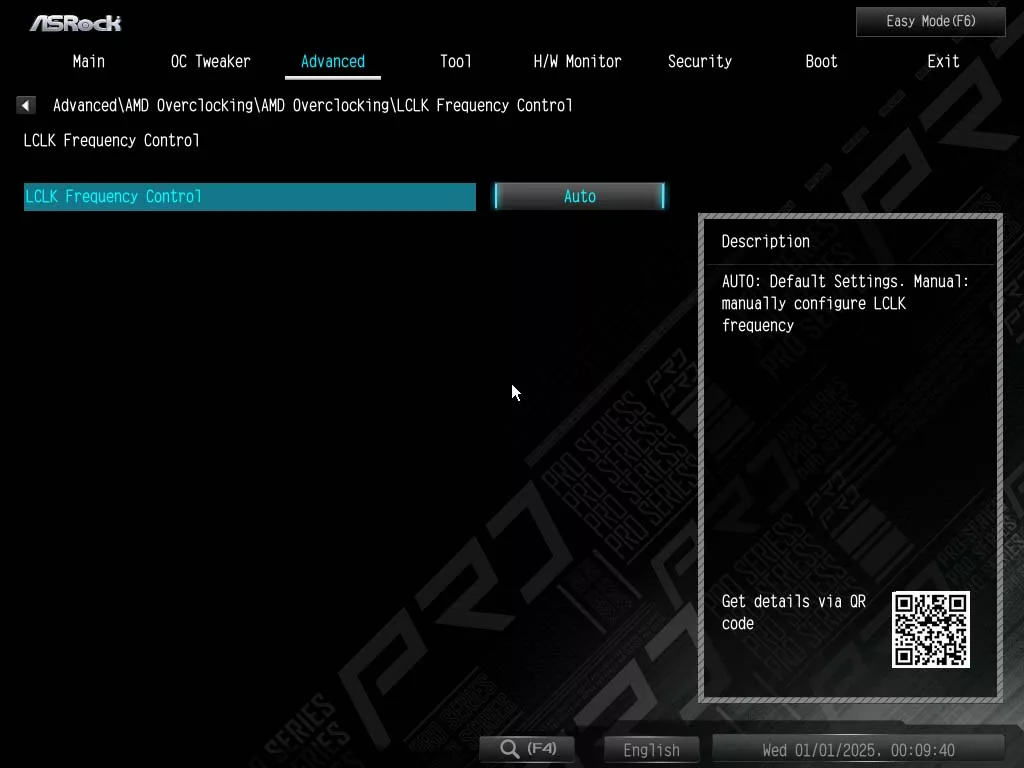
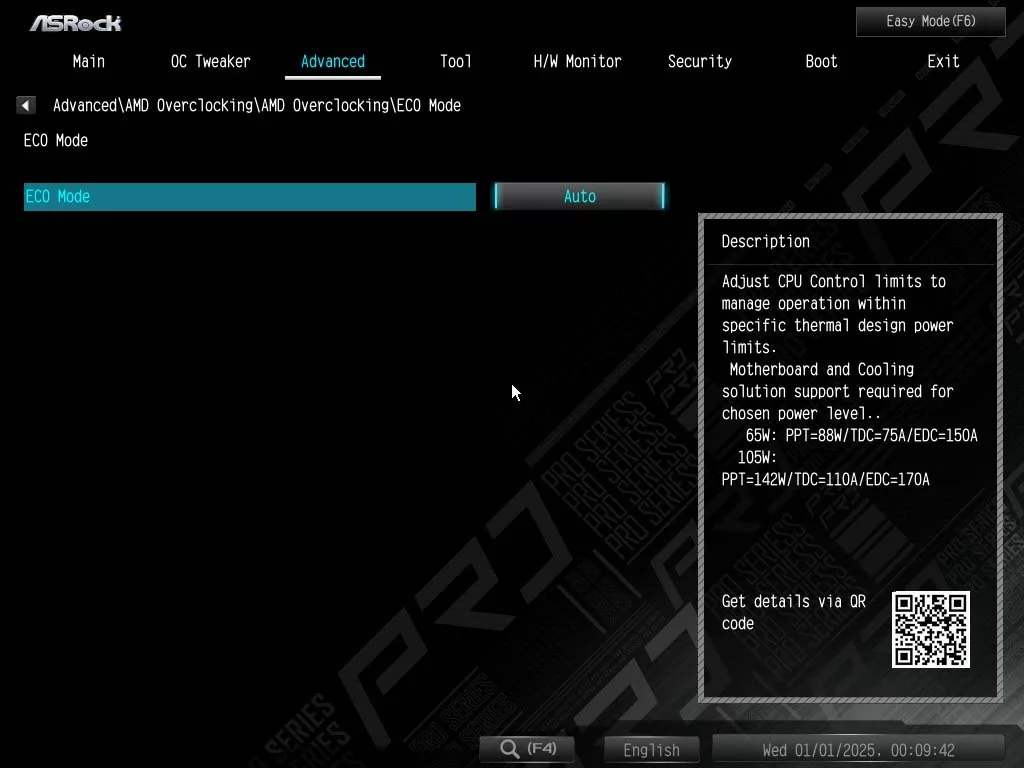
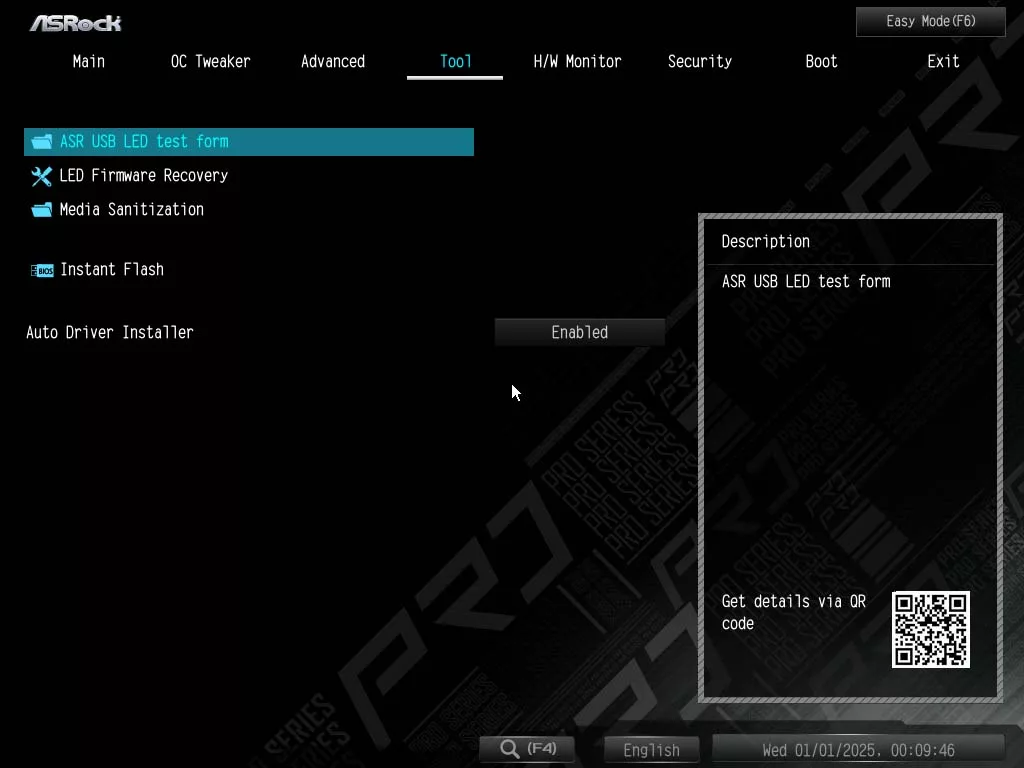
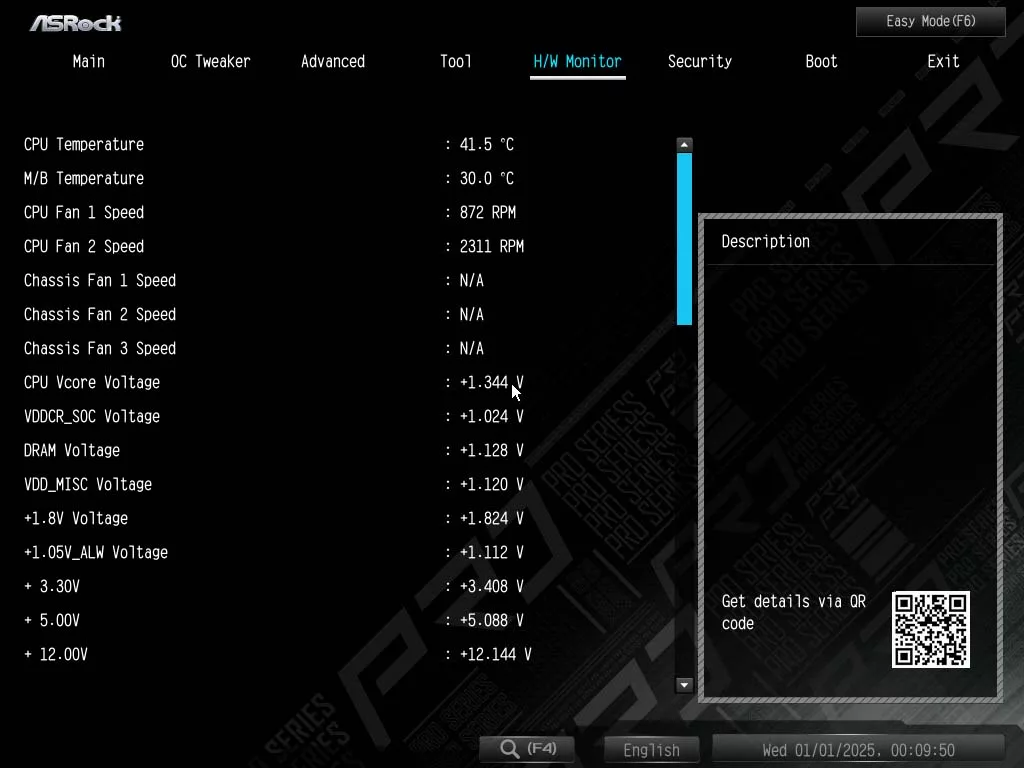
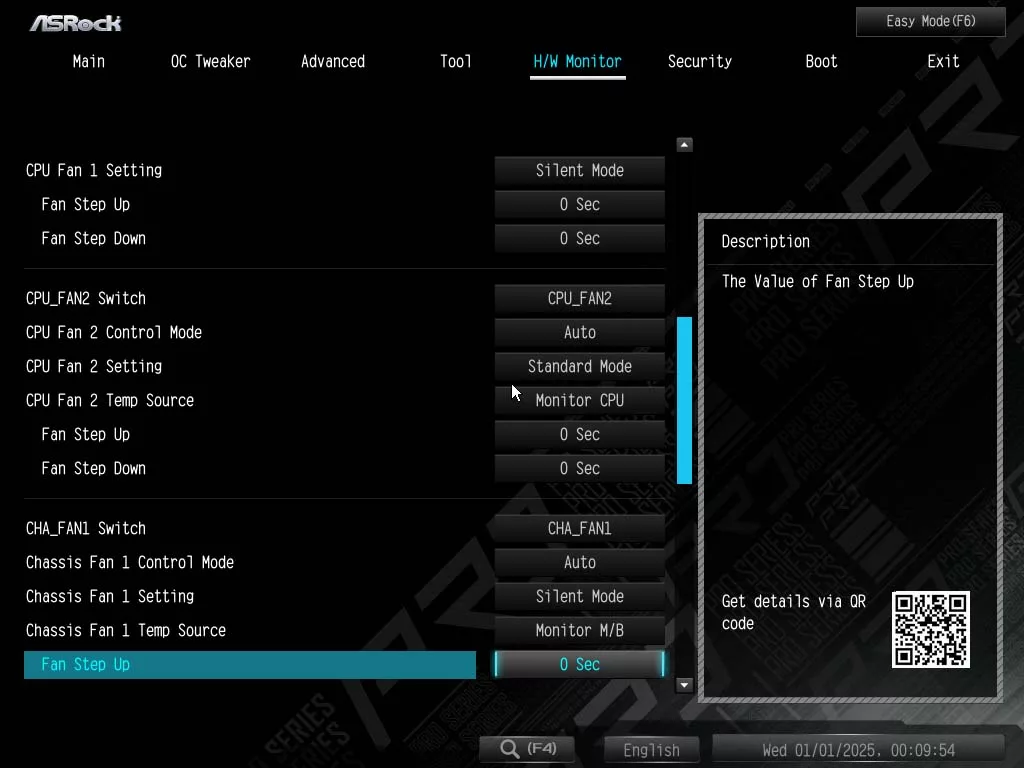
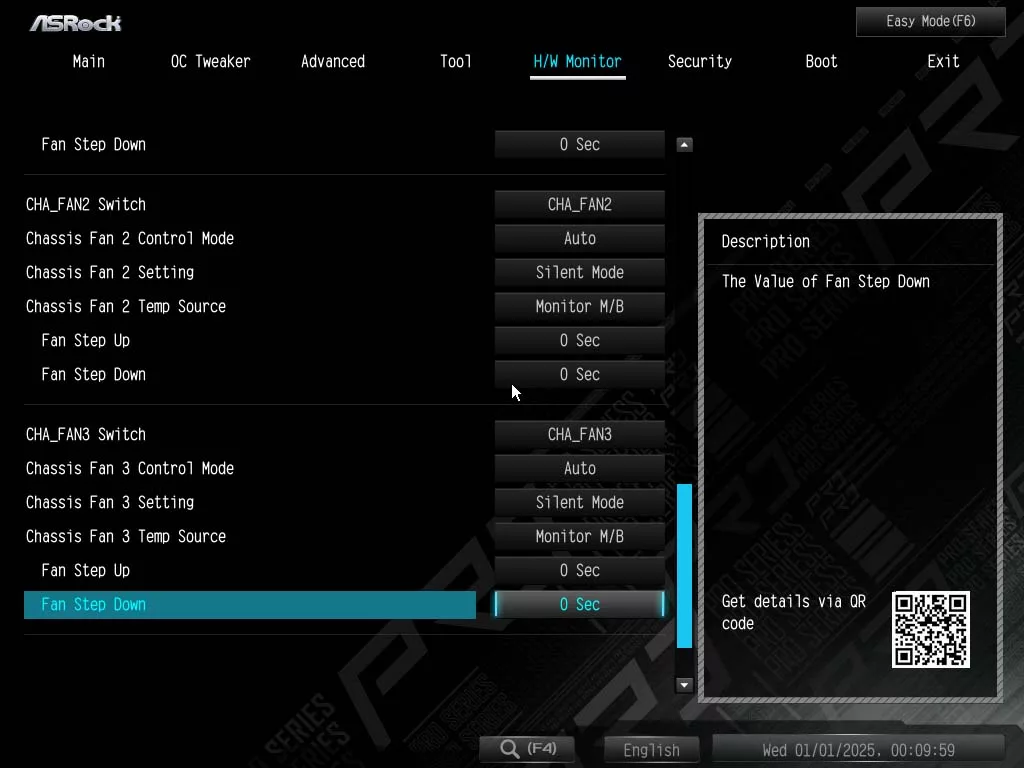
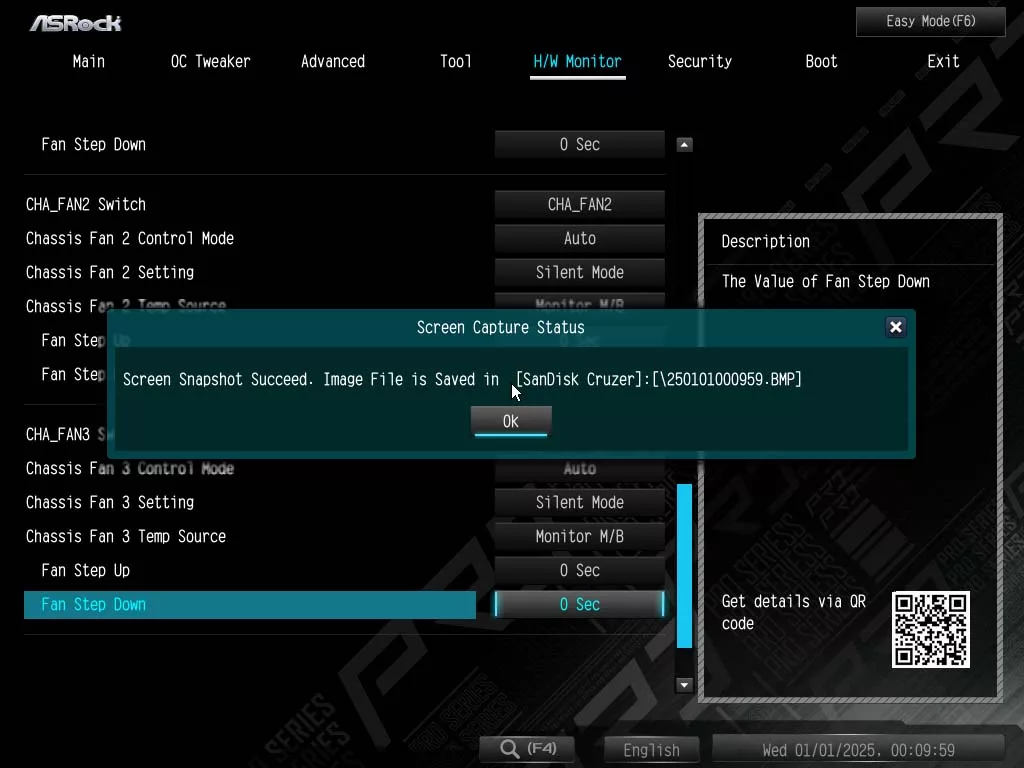
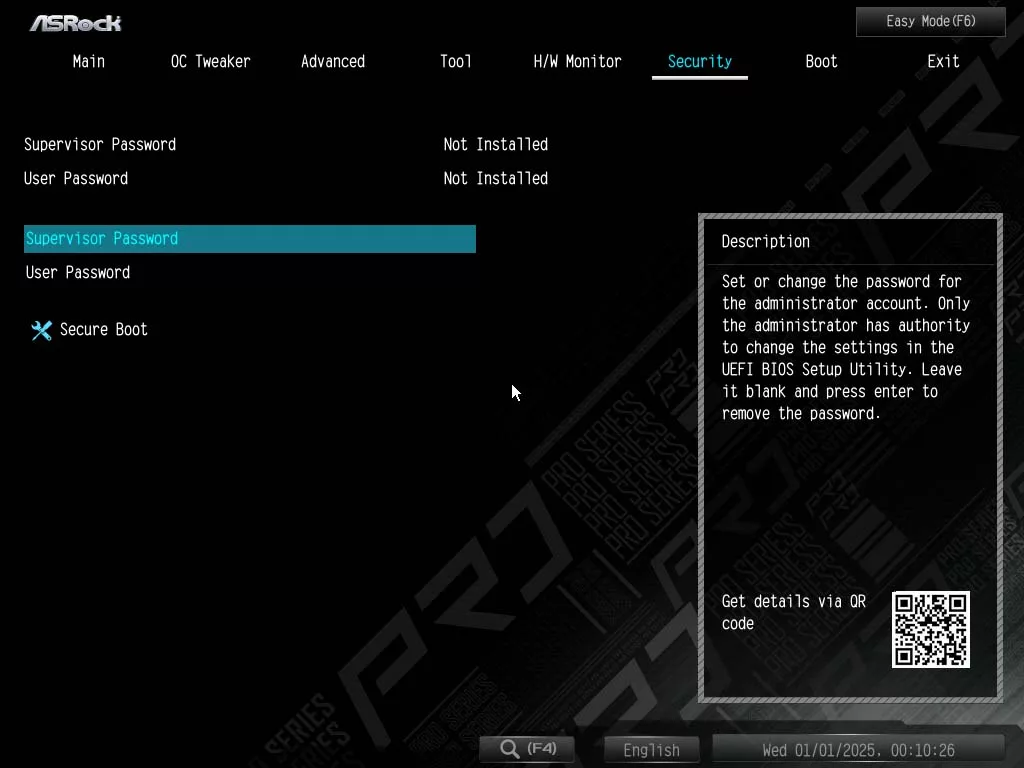
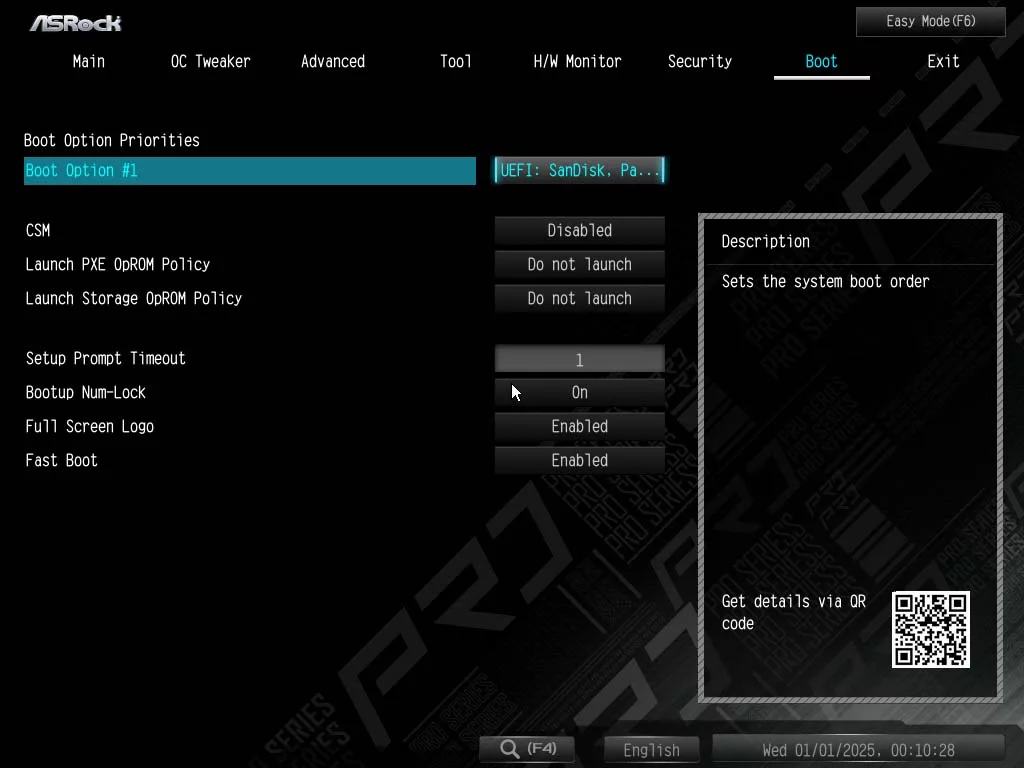
Motherboard Performance
As with all of our recent 2025 reviews, we will be using our new performance section. You will find images of all of our testing results in the gallery, while the following paragraphs summarize what we experienced. As always with our AMD 2025 reviews, we will have the Ryzen 9 7900X as the CPU of choice for testing.
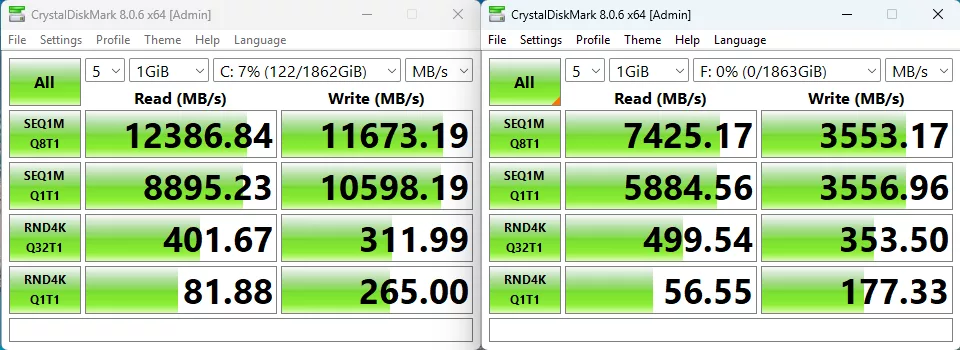
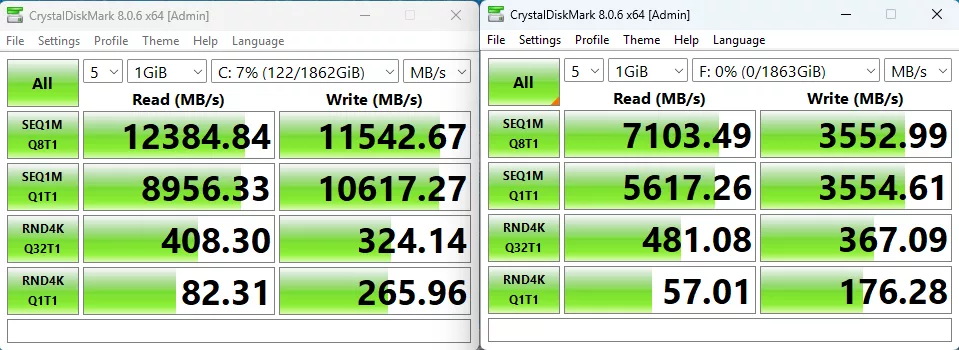
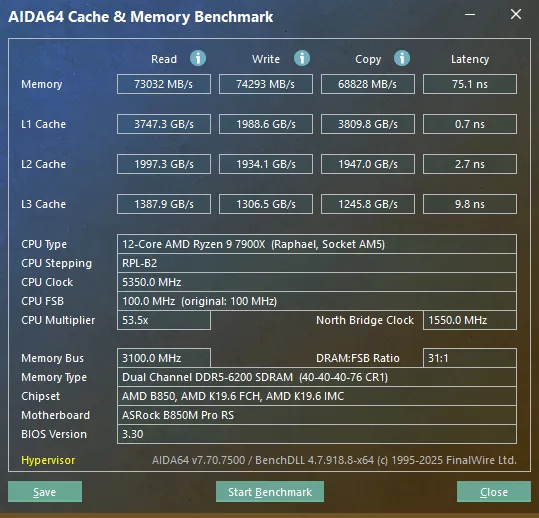
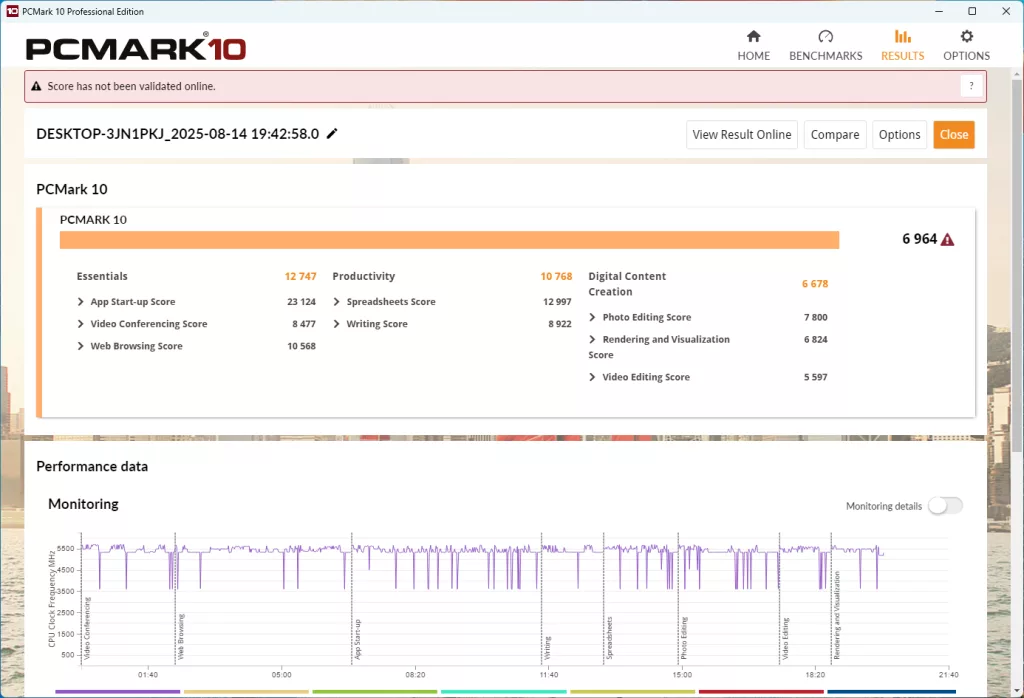
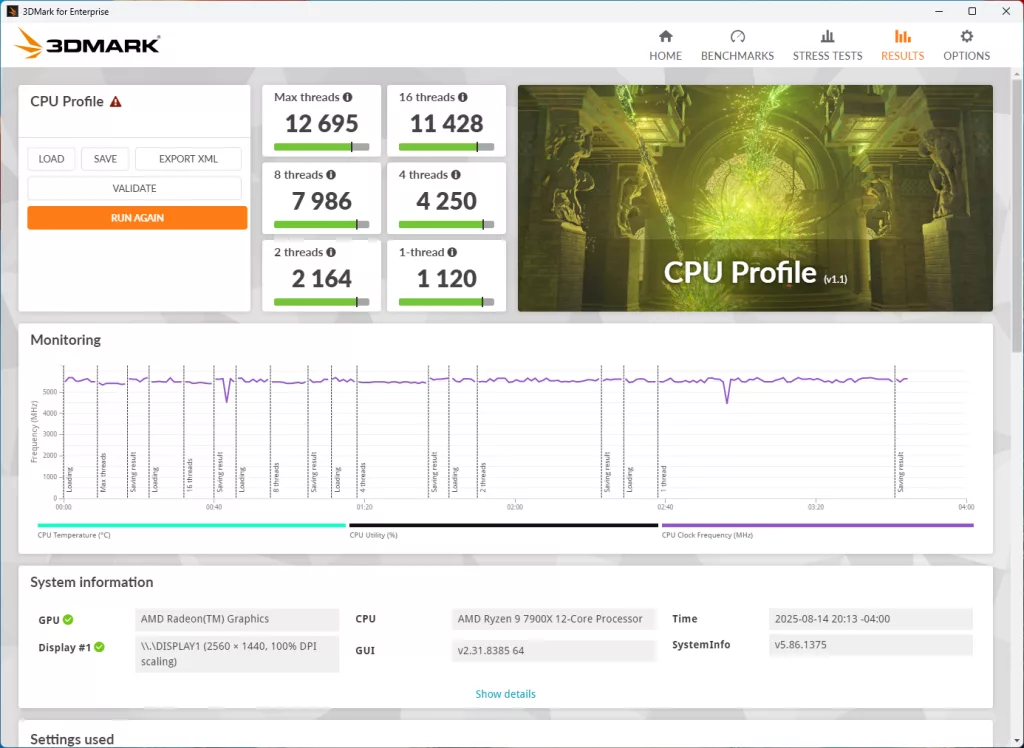
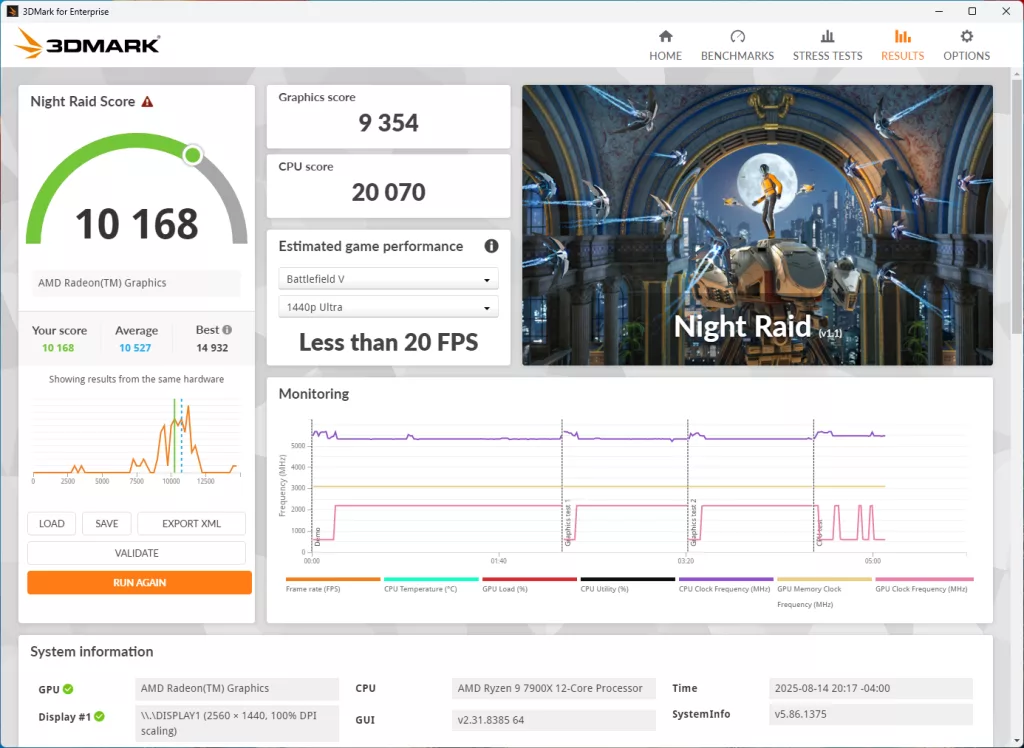
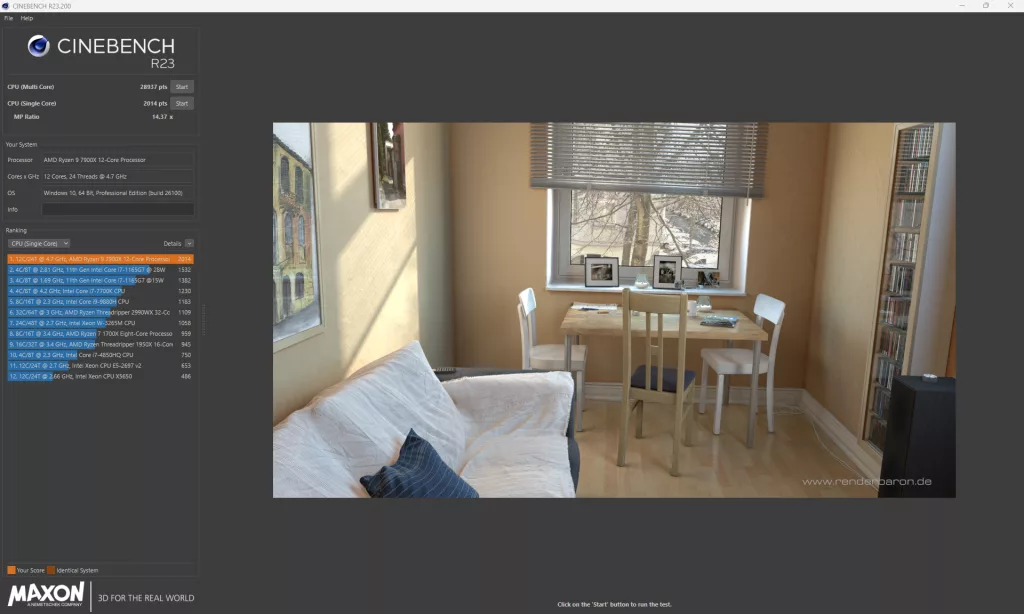
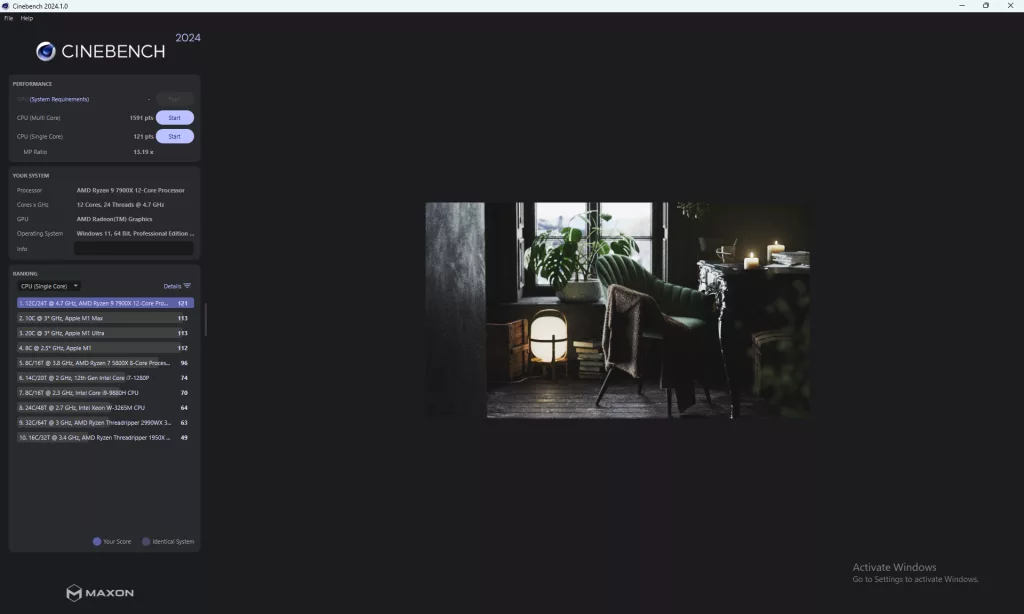
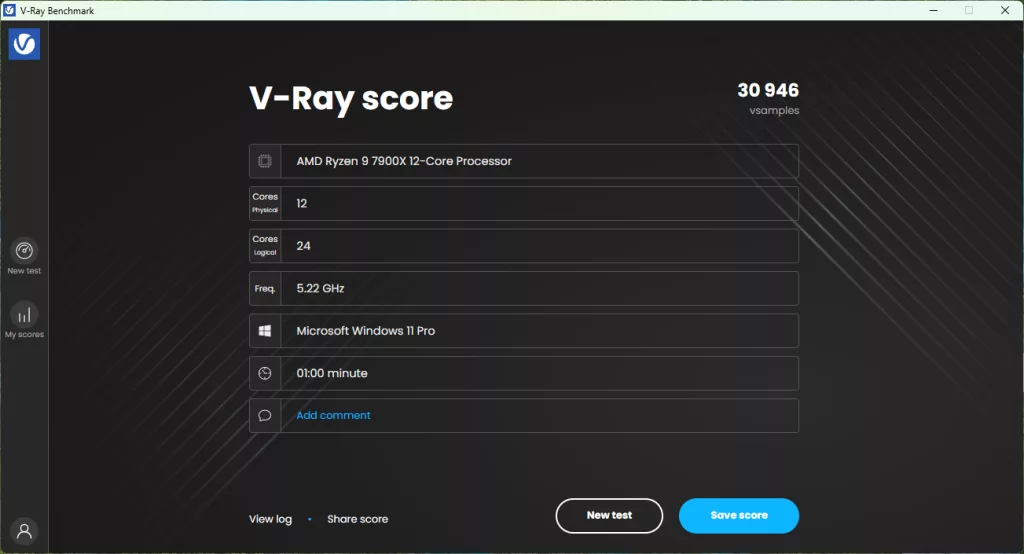
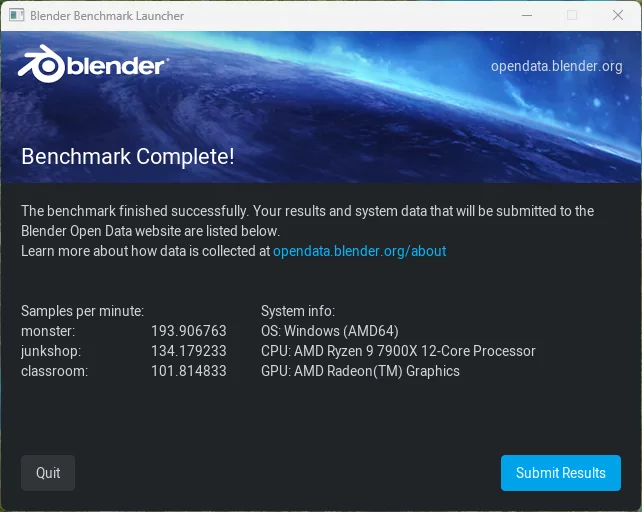
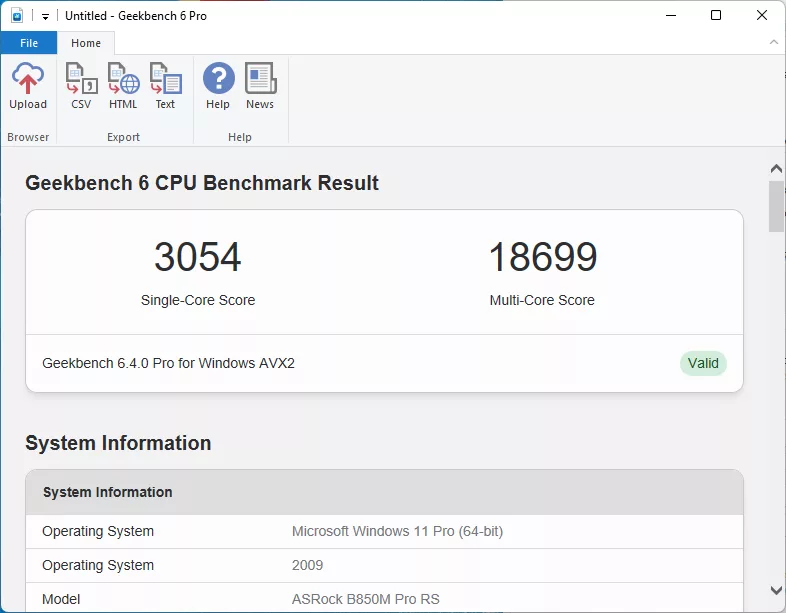
Our first point of testing like always is our storage test, where we have our MSI SPATIUM M570 PRO FROZR as our primary drive in the M2_1 slot, and the ADATA LEGEND 970 2TB NVME SSE as our second drive in the M2_2 (From the Chipset) and M2_3 (From the CPU) slots. Both tests resulted in nearly the same results, however our second test with the M2_2 slot had slightly better performance, with the M570 clocking in at 12,387 MB/s Read, and 11,673 MB/s read, and the LEGEND 970 gave us speeds of 7,425 MB/s Read, and 3,553 MB/s Write.
Next is our memory testing using AIDA64’s Cache & Memory Benchmark. With the ASRock B850M Pro RS, our Patriot memory kit was able to achieve a Memory Read Speed of 73,032 MB/s, a Write Speed of 74,293 MB/s, and a Copy Speed of 68,828 MB/s. These are all slightly below our expected speeds for a B850 motherboard with this memory kit with the Ryzen 9 7900X CPU.
The synthetic benchmarks are next up, with PCMark, 3Dmark, Cinebench (R23 and 2024), V-Ray, Blender, and finally GeekBench6. PCMark continues the B850 trend we have seen with lower-than-expected scores, where we are coming in at 6,964, which is around 2,000 points lower than the X870E motherboards we have tested. 3DMark brings us back in line with our expected points, with the CPU Profile Max Thread score coming in at 12,695, and Night Raid scored 20,070 for its CPU score.
Both Cinebench tests are right around where we expect it to be, with R23 scoring 28,937 points in Multi-Core, and 2,014 points in Single-Core testing. The more recent Cinebench 2024 comes in at 1,591 points for Multi-Core, and 121 points for Single-Core. V-Ray testing is again in line with what is expected at 30,946 vsamples. Blender had a score of 193.91 for monster, 134.18 for junkshop, and 101.81 for classroom scenes. The final test we have run is GeekBench 6 Pro, where we scored 3,054 for Single-Core, and 18,699 for Multi-Core, which is right in line with our historical values.
VRM Temperature
The last testing we completed on the ASRock B850M Pro RS is the VRM temperature test. For this test we run Cinebench 2023 Multi-Core test for a minimum of 15 minutes, to fully stress the system. At the 15 minute mark we take a screenshot and record the temperatures as reported by the most current version of HWiNFO 64, as well as a manual temperature reading with a Handheld Infrared thermometer. All testing occurs at an ambient temperature of approximately 75°F (24°C).
The cooling on the ASRock B850M Pro RS fell short of our expectations, underperforming most other mATX B850 motherboards we have seen to date, with the chipset coming in at a high point of 55.6°C in HWiNFO. As of the latest release at the time of testing, HWiNFO did not have any temperatures labeled as MOSFET cooling or similar. Our handheld readings gave us 57.9°C as the highest observed temperature on the MOSFET / power cooling area, and 43.9°C on the chipset.
Conclusion
With our testing of the ASRock B850M Pro RS, we saw that it was a perfectly average motherboard. It was able to meet our baseline expectations for our testing, but similar to other mATX motherboards we have seen recently, it is lacking in cooling, which may not be a big deal for the professional user, but would be for anyone looking to use this for overclocking or for anything heavy with computing tasks.
Installation and Use
Installation of the ASRock B850M Pro RS onto our test bench was seamless with no issues with the physical installation, though it is important to note that there is a 4-pin fan header located right behind the M2_1 slot that made installation of our M570 NVMe drive slightly tricky. Other than this, all power connectors are in the anticipated places, as are the remaining fan headers.
We ran into no issues updating the UEFI or diving deeper to adjust our fan settings or the XMP settings of our memory kit. Windows 11 installation gave us no issues either, and found all of the drivers itself along with the standard prompt from ASRock’s installer software to find and install all the most up-to-date drivers. The only driver we made sure to go look for was the most recent AMD chipset driver directly from AMD for our testing.
Final Points
While the ASRock B850M Pro RS is a capable mATX motherboard, it is essentially a variation of the ASRock B850M Phantom Gaming WIFI that we just reviewed. It also comes with three (3) NVMe slots and four (4) SATA ports for large storage expansion. It differs in that all three (3) NVMe slots are x4 mode capable; however, that won’t matter to the majority of users. At the end of the day, this motherboard has not exceeded our expectations for a $150 motherboard; however, we have not been disappointed either, as it just works.


